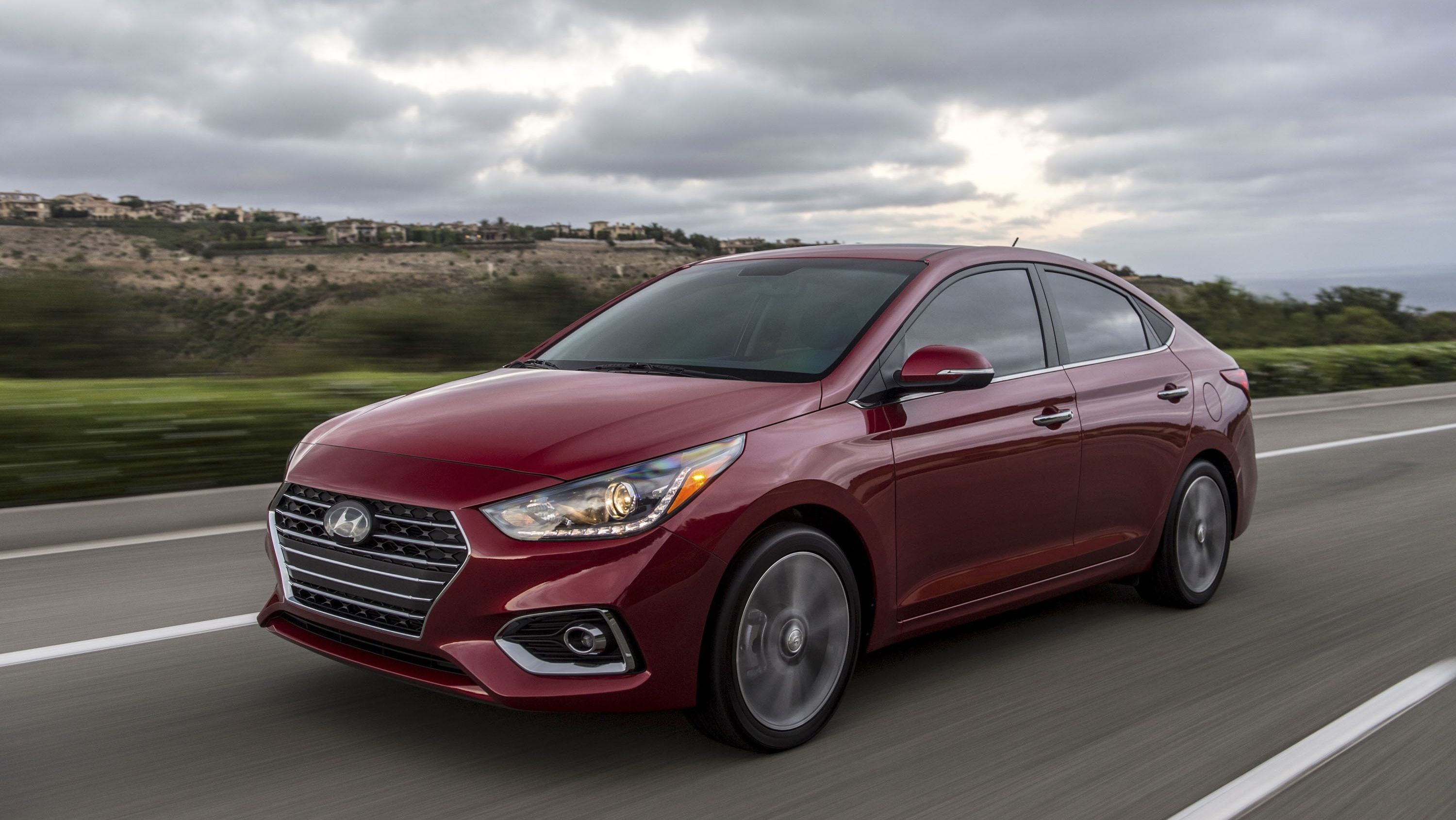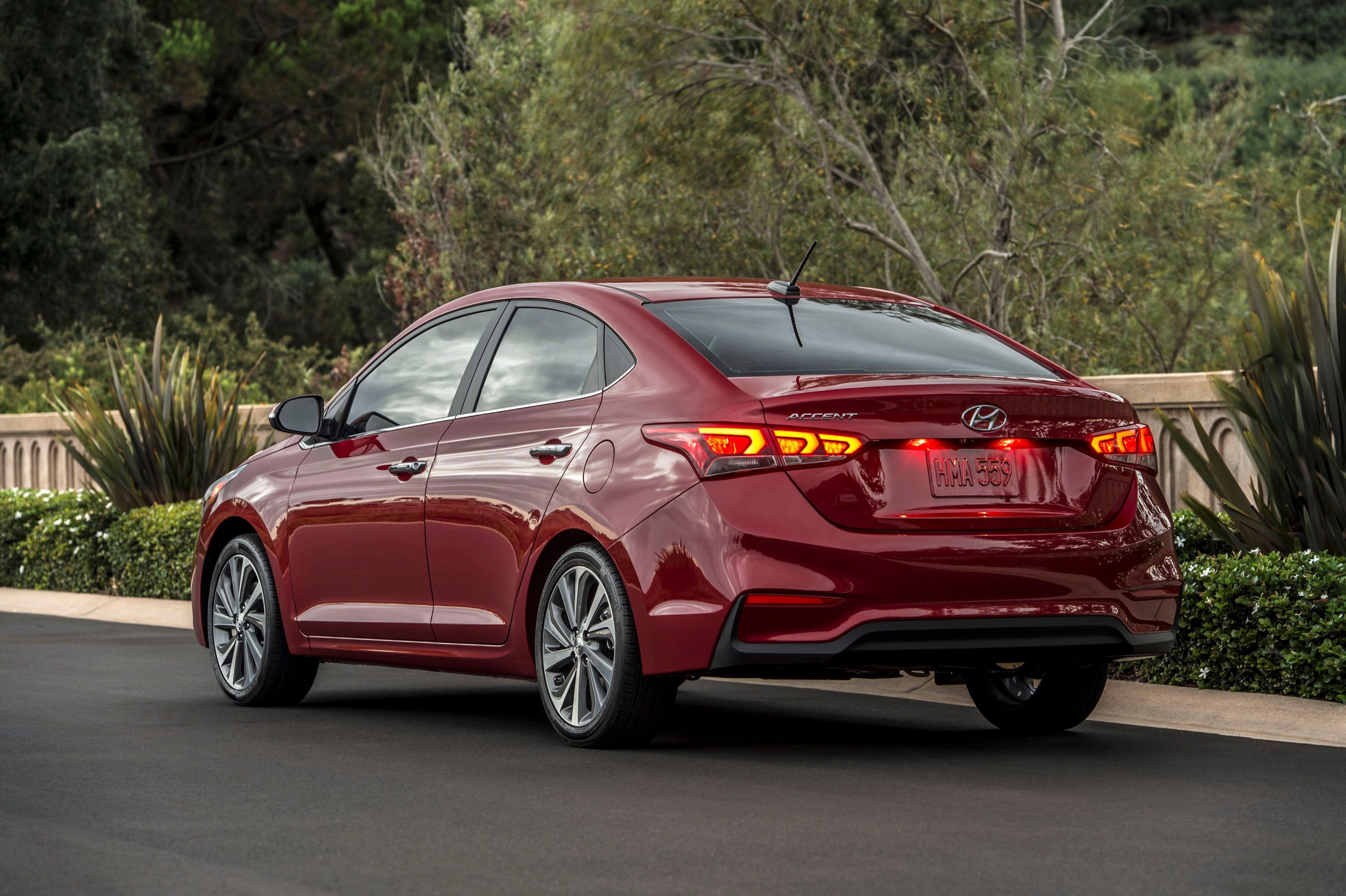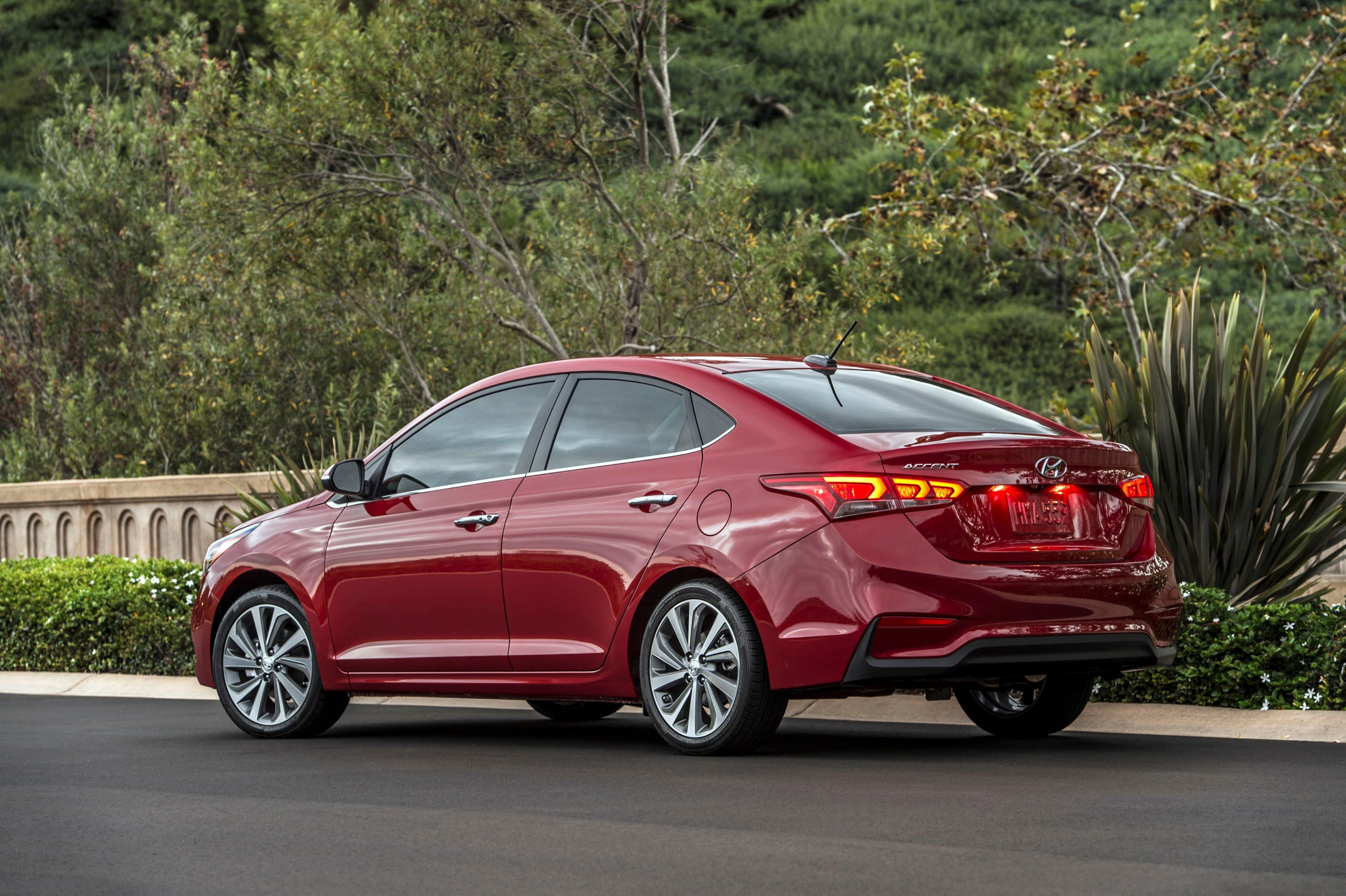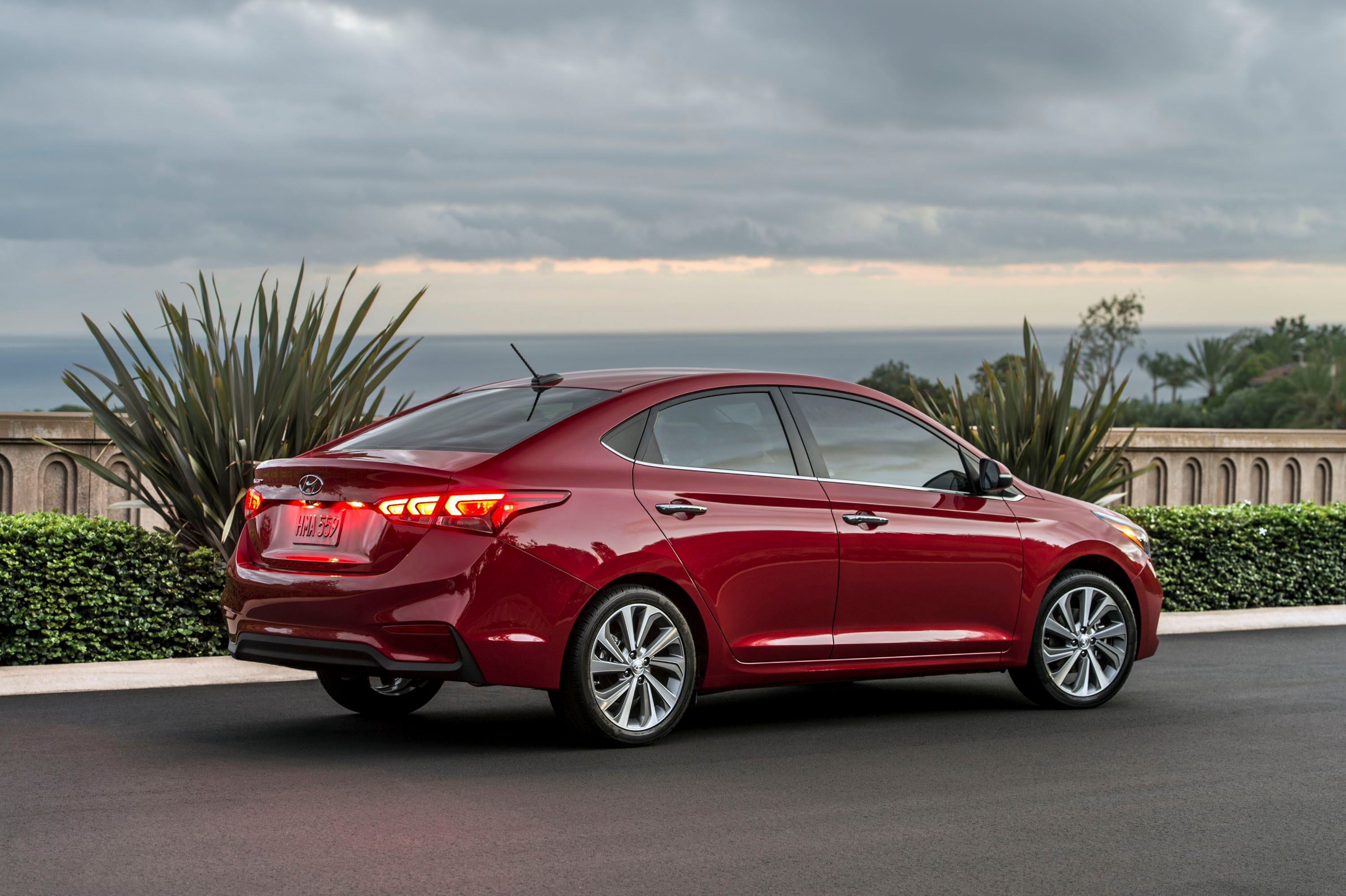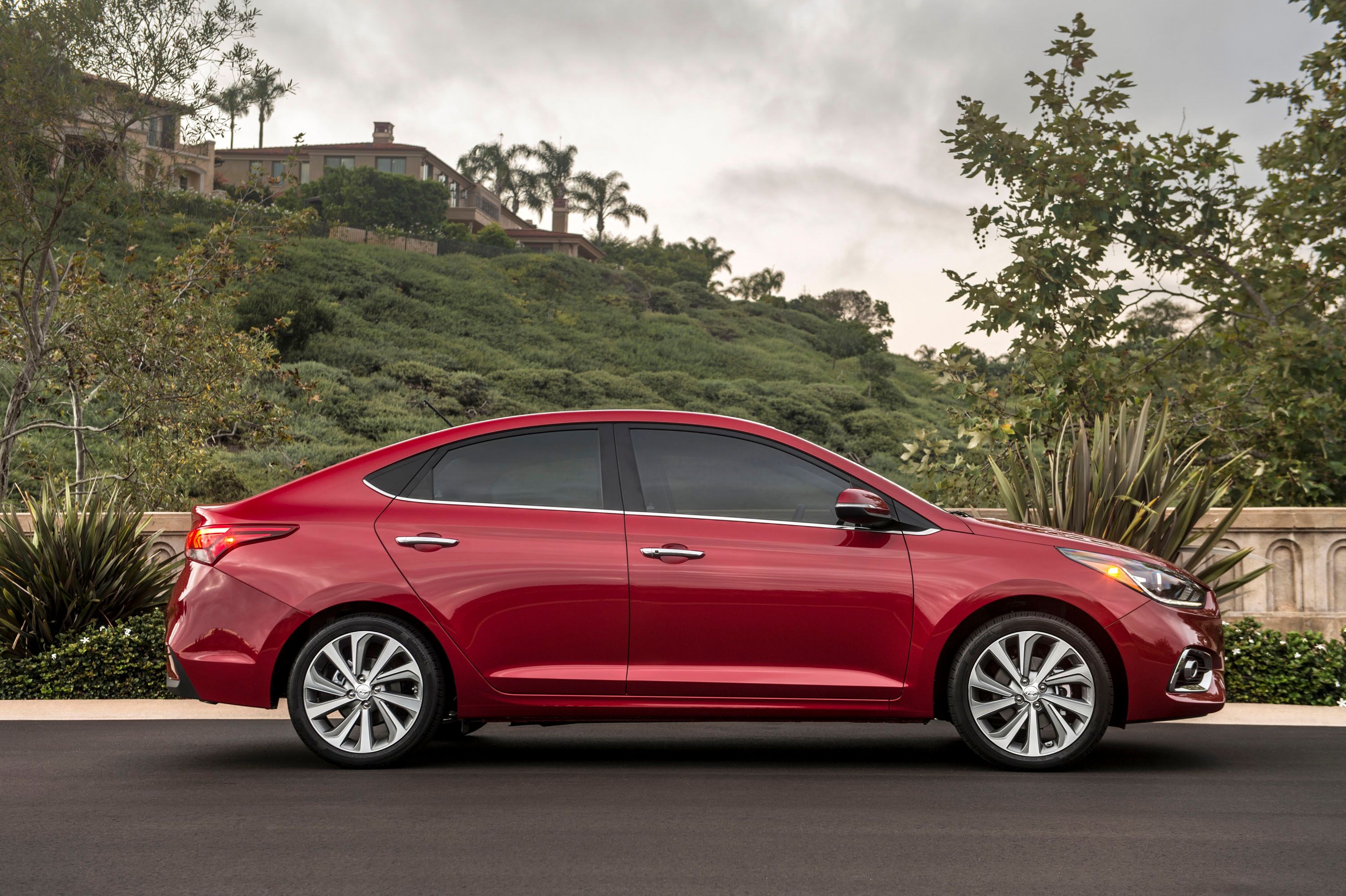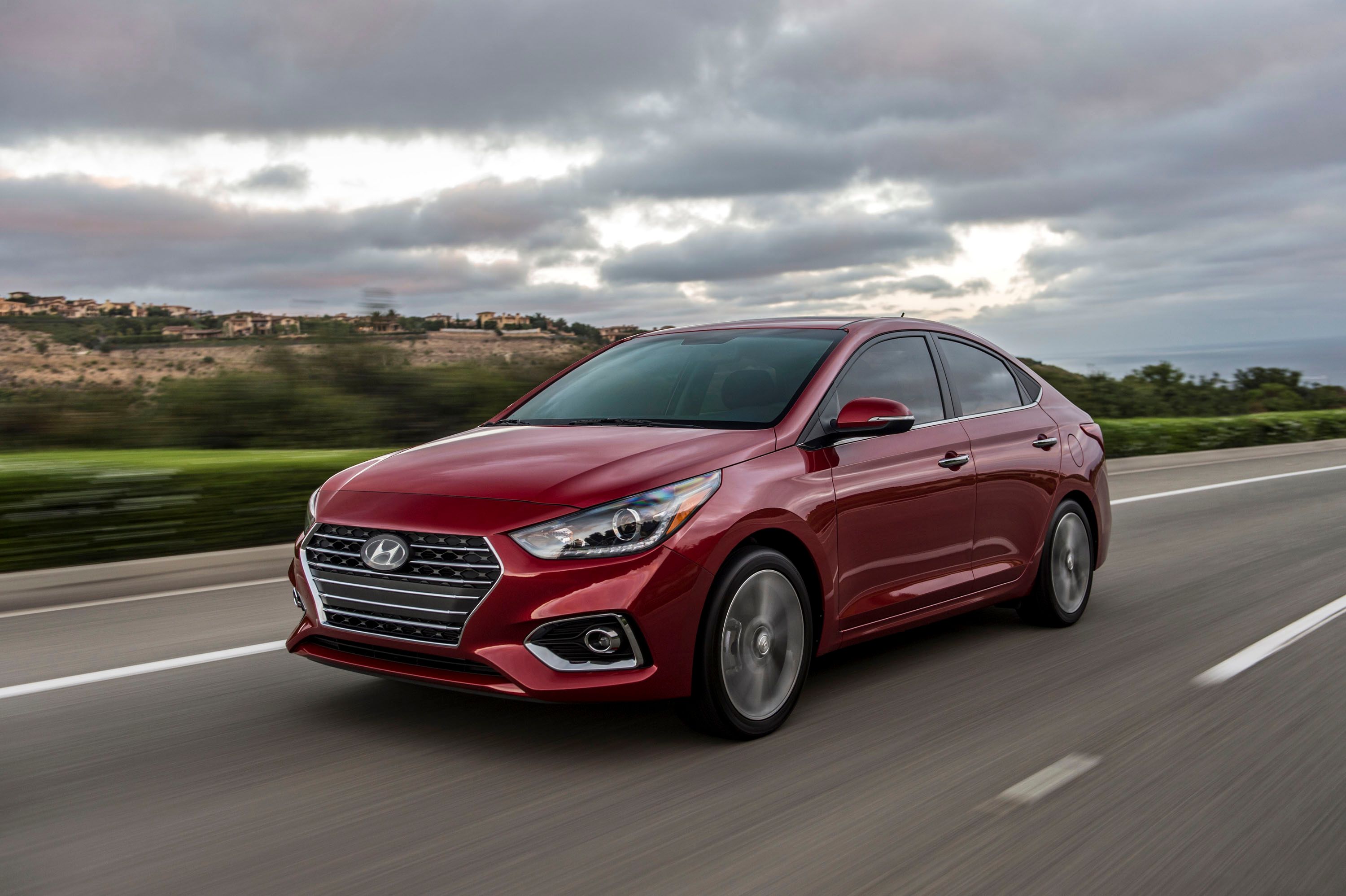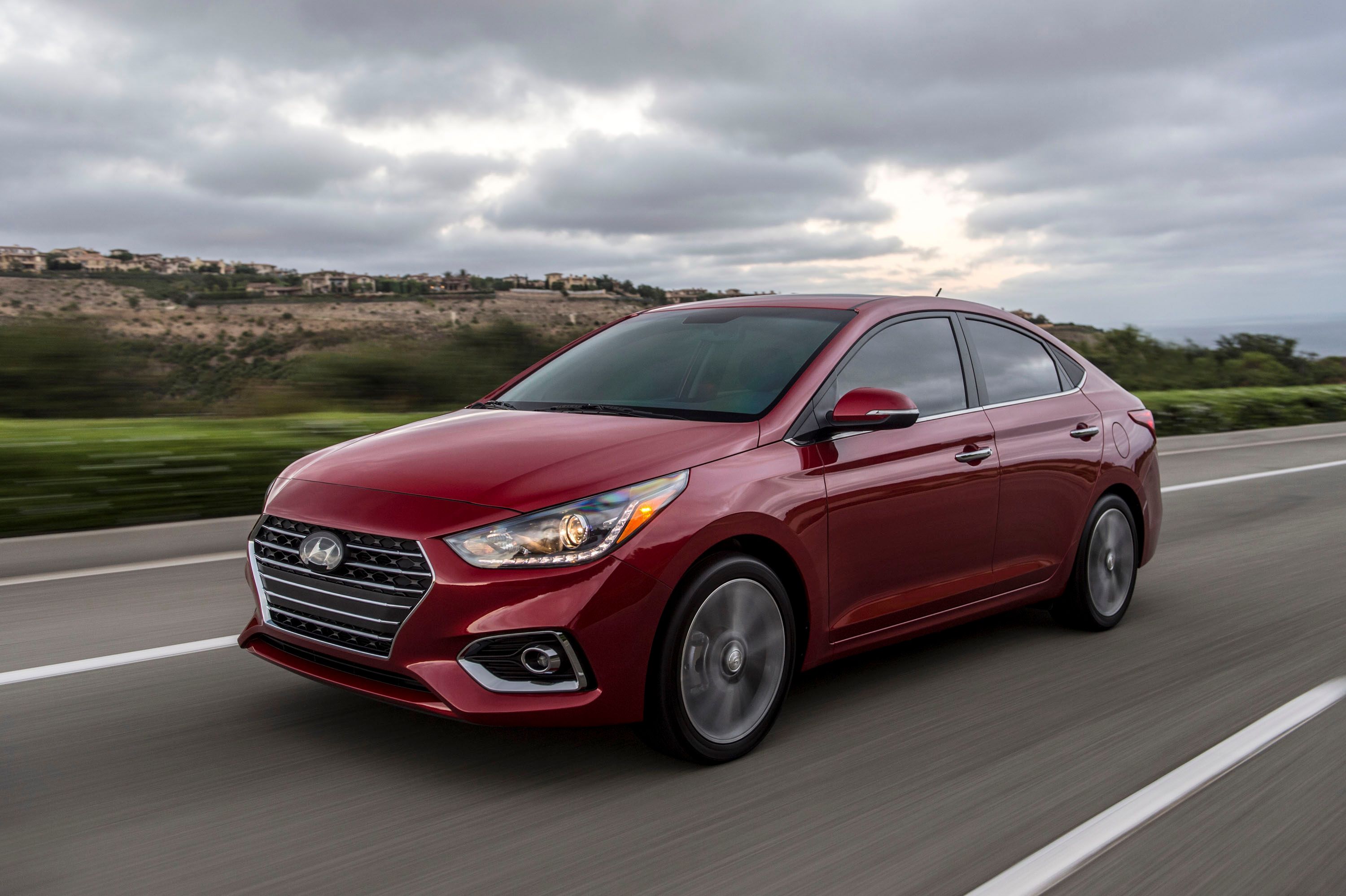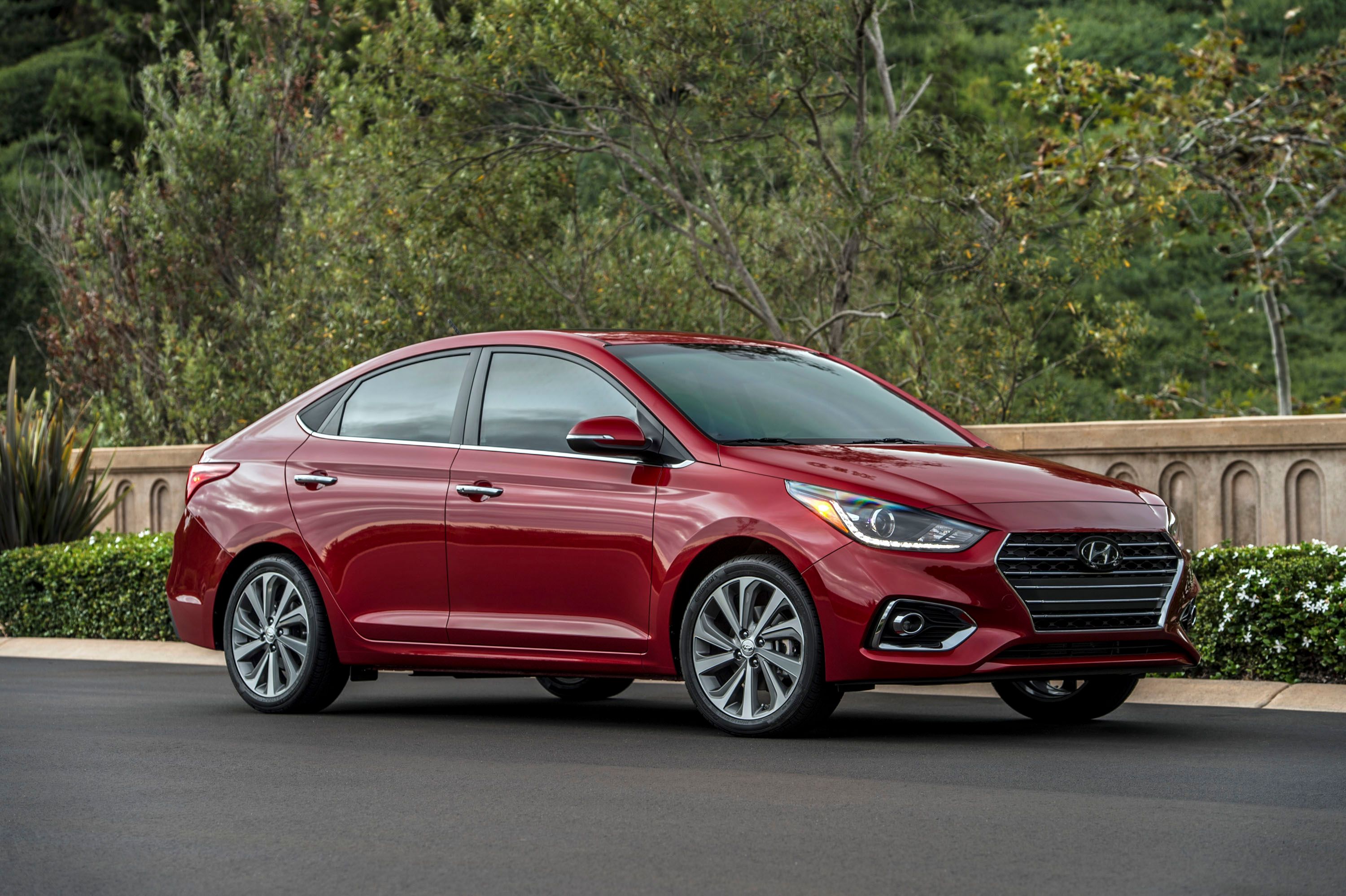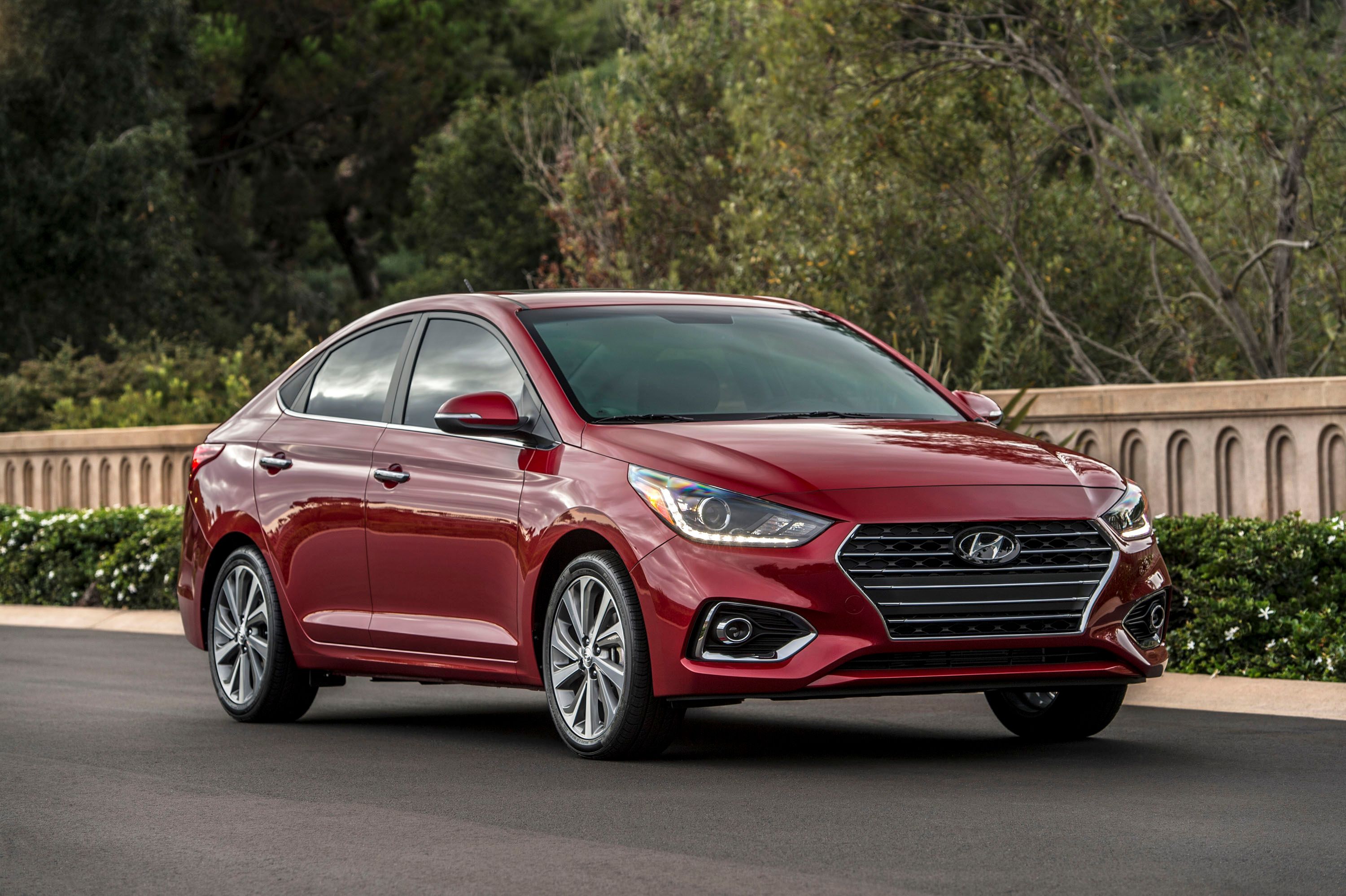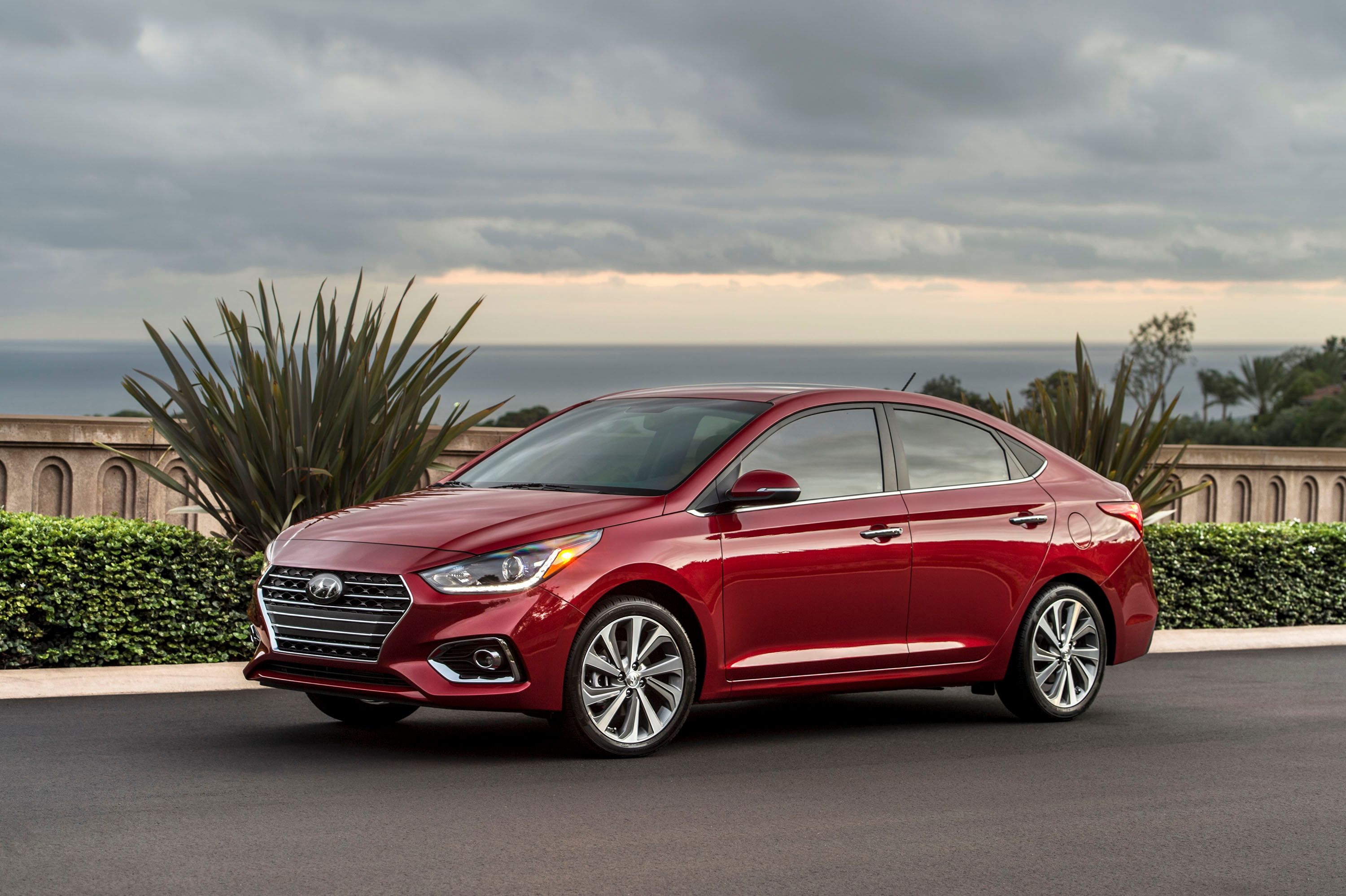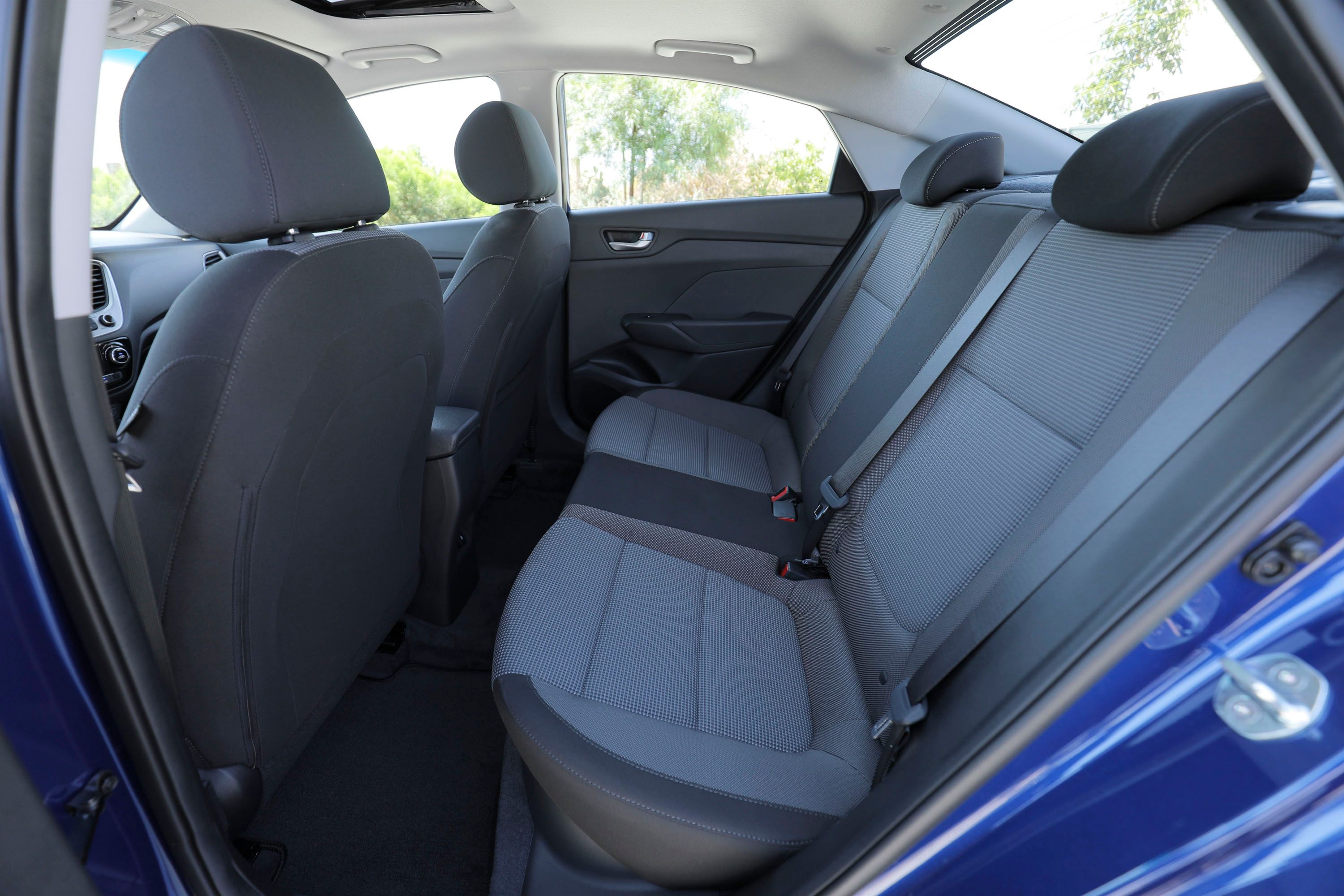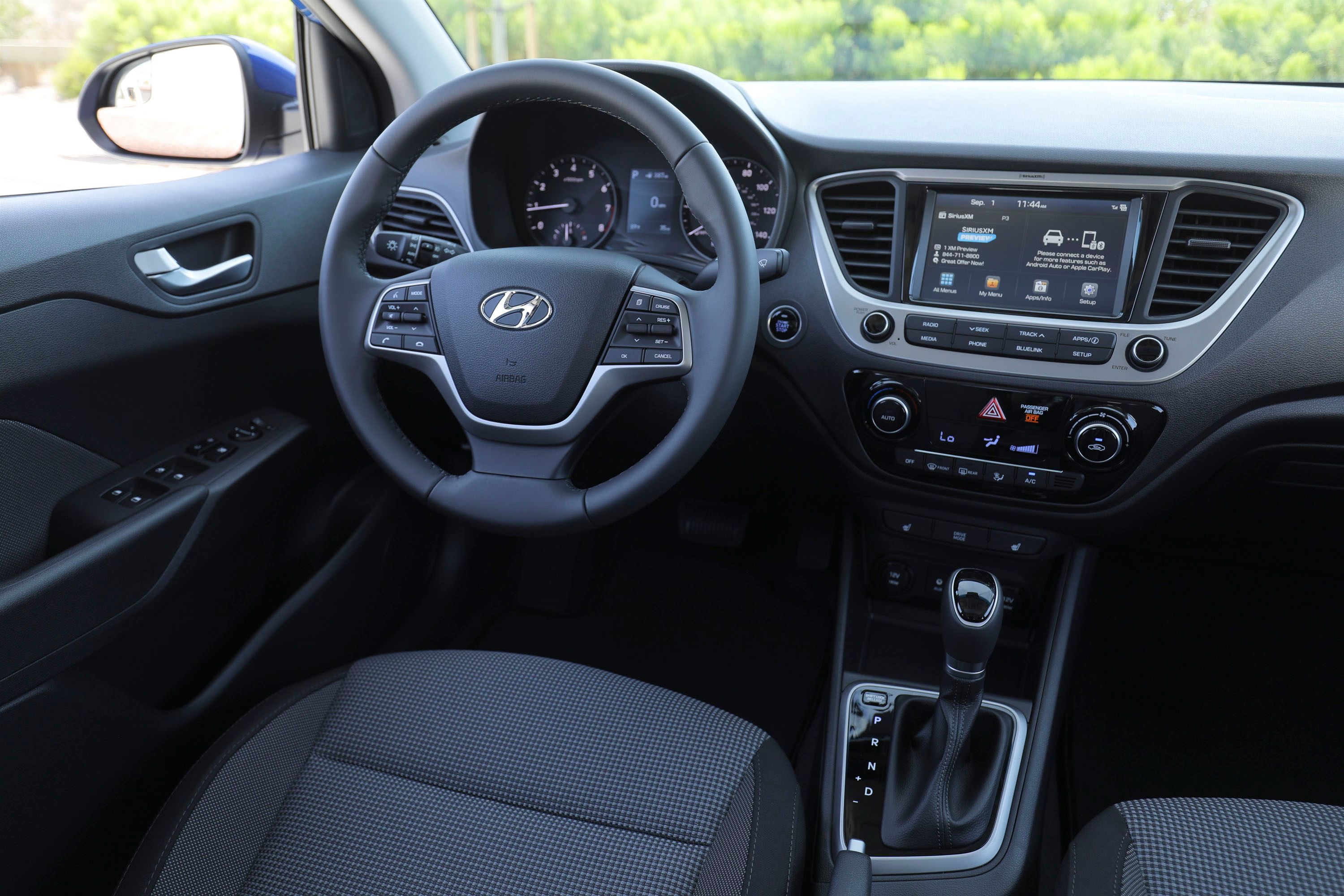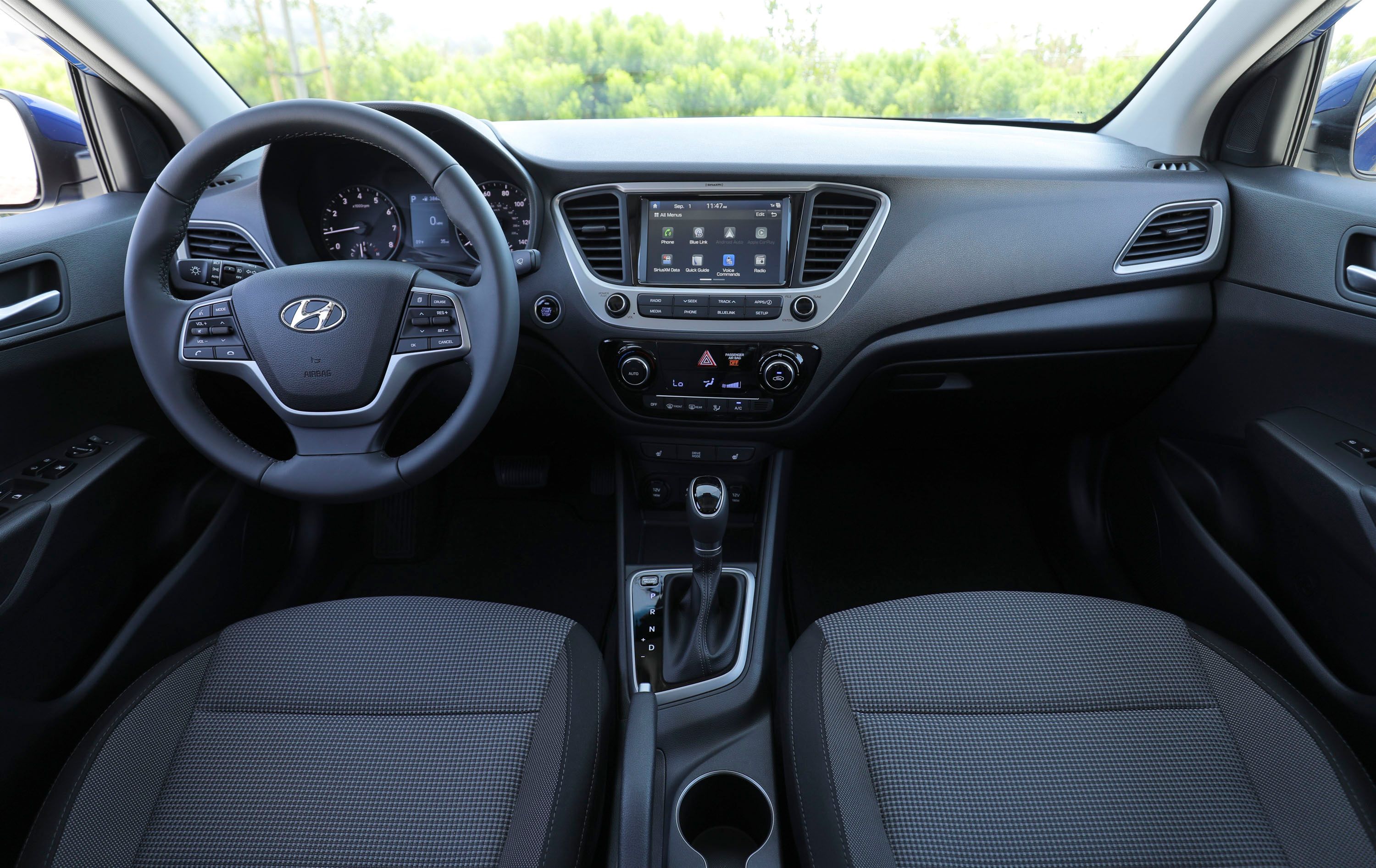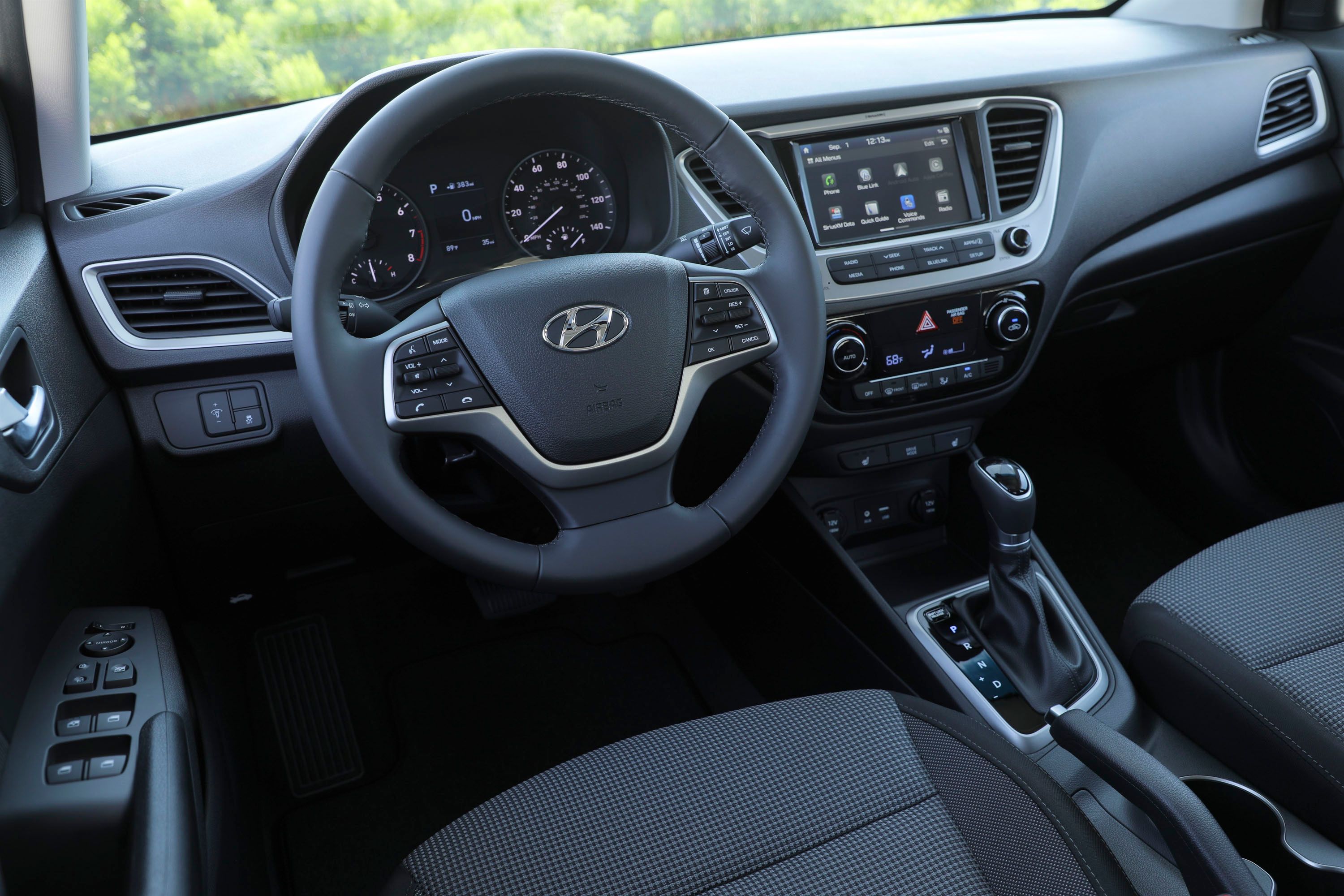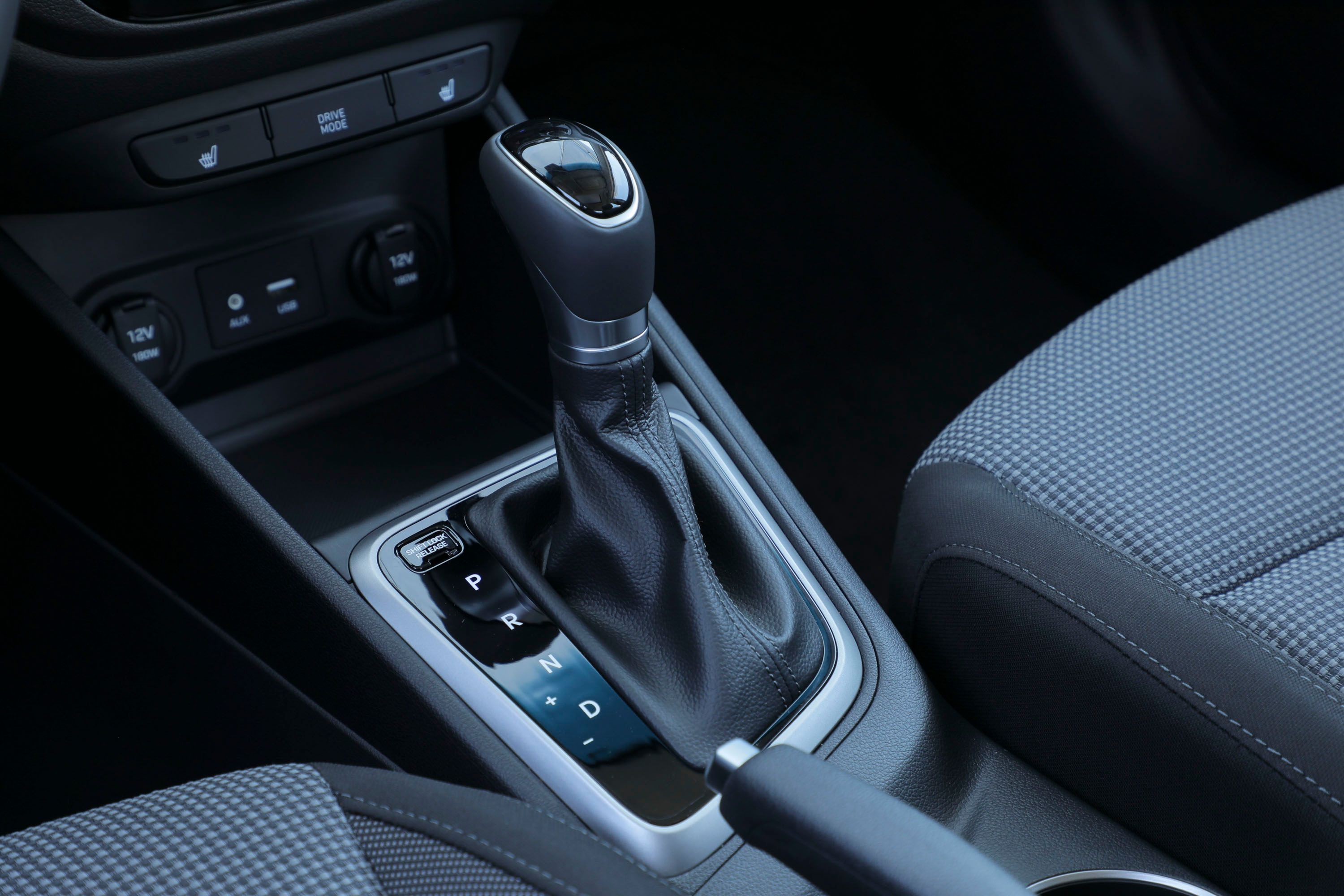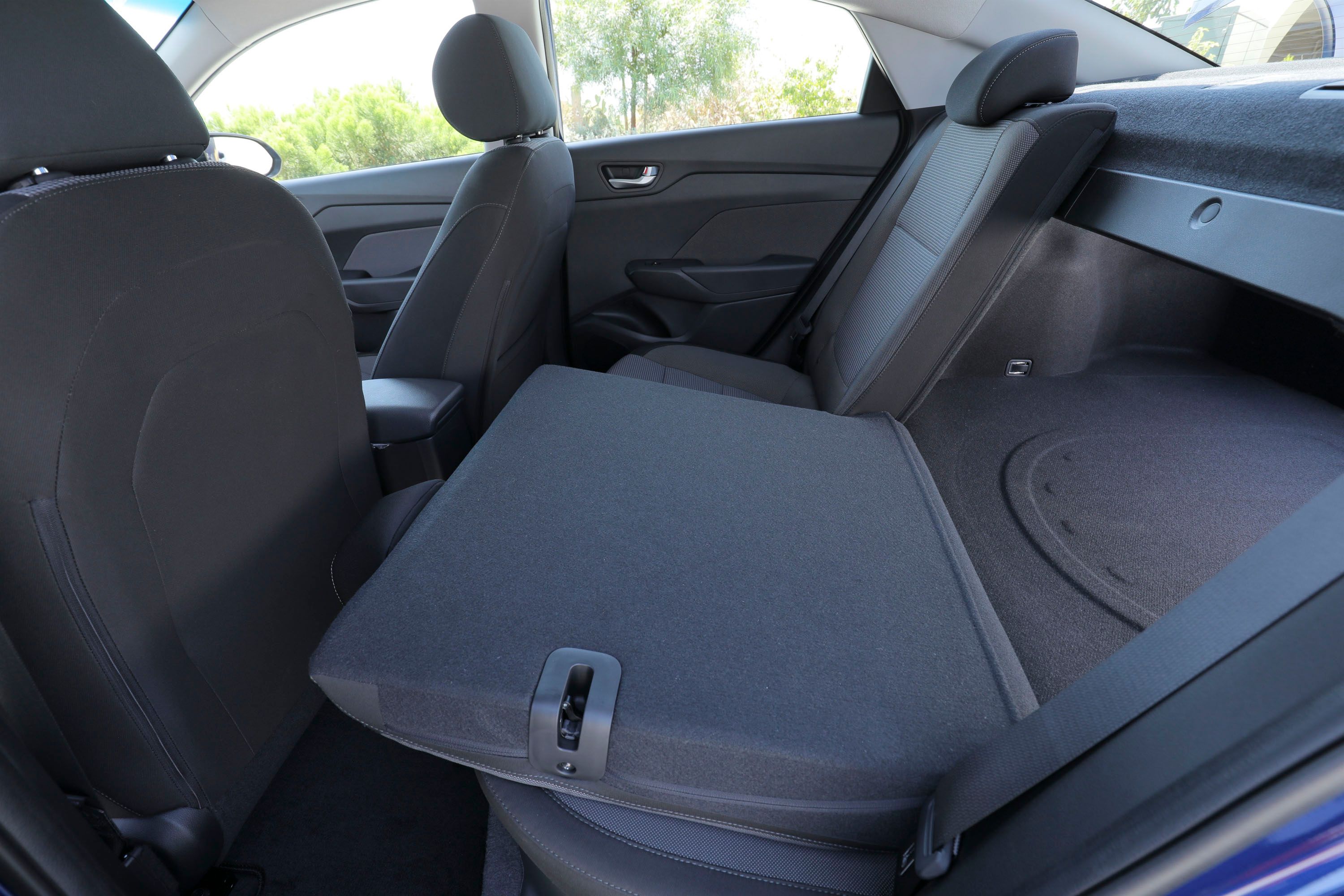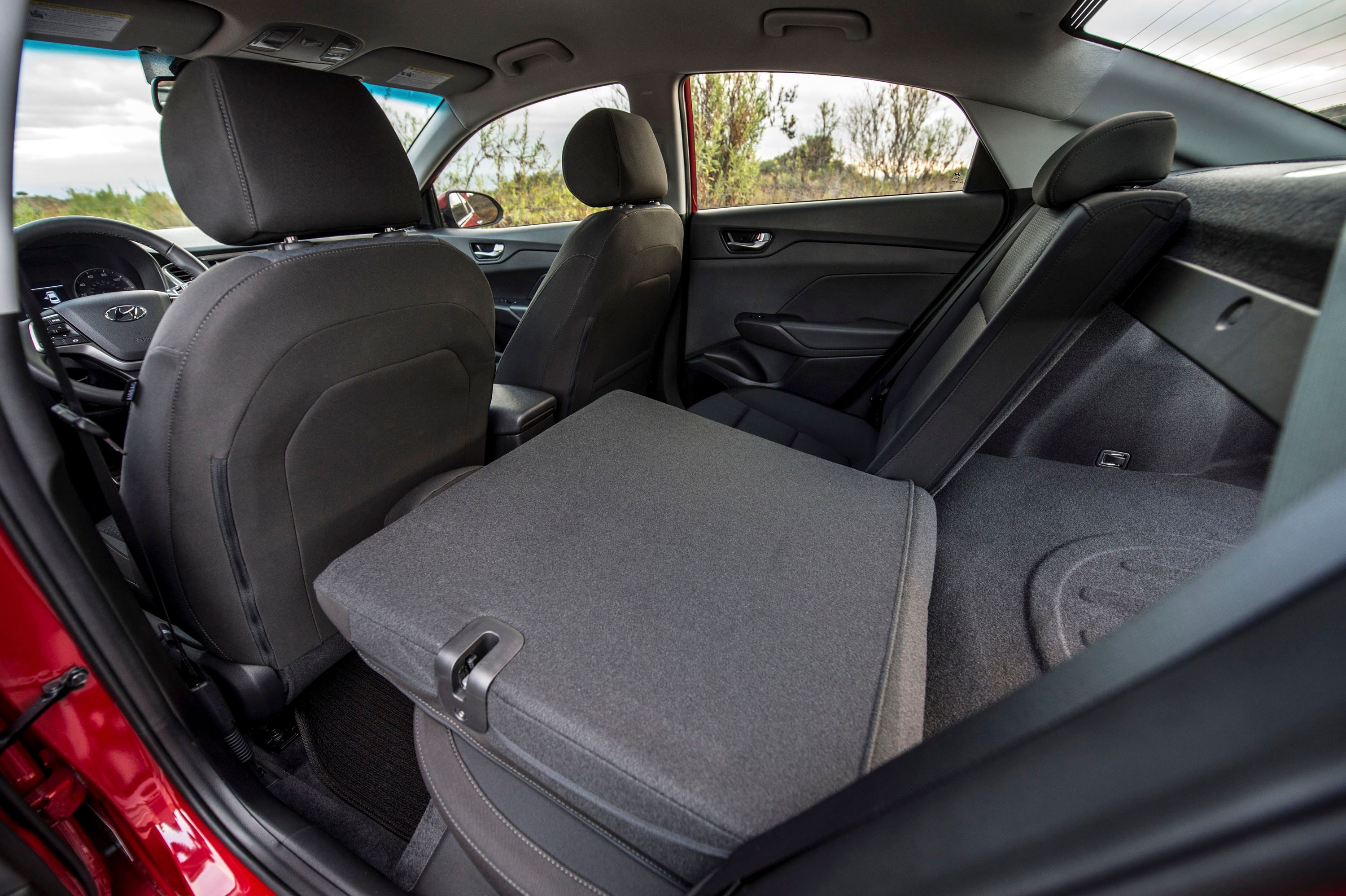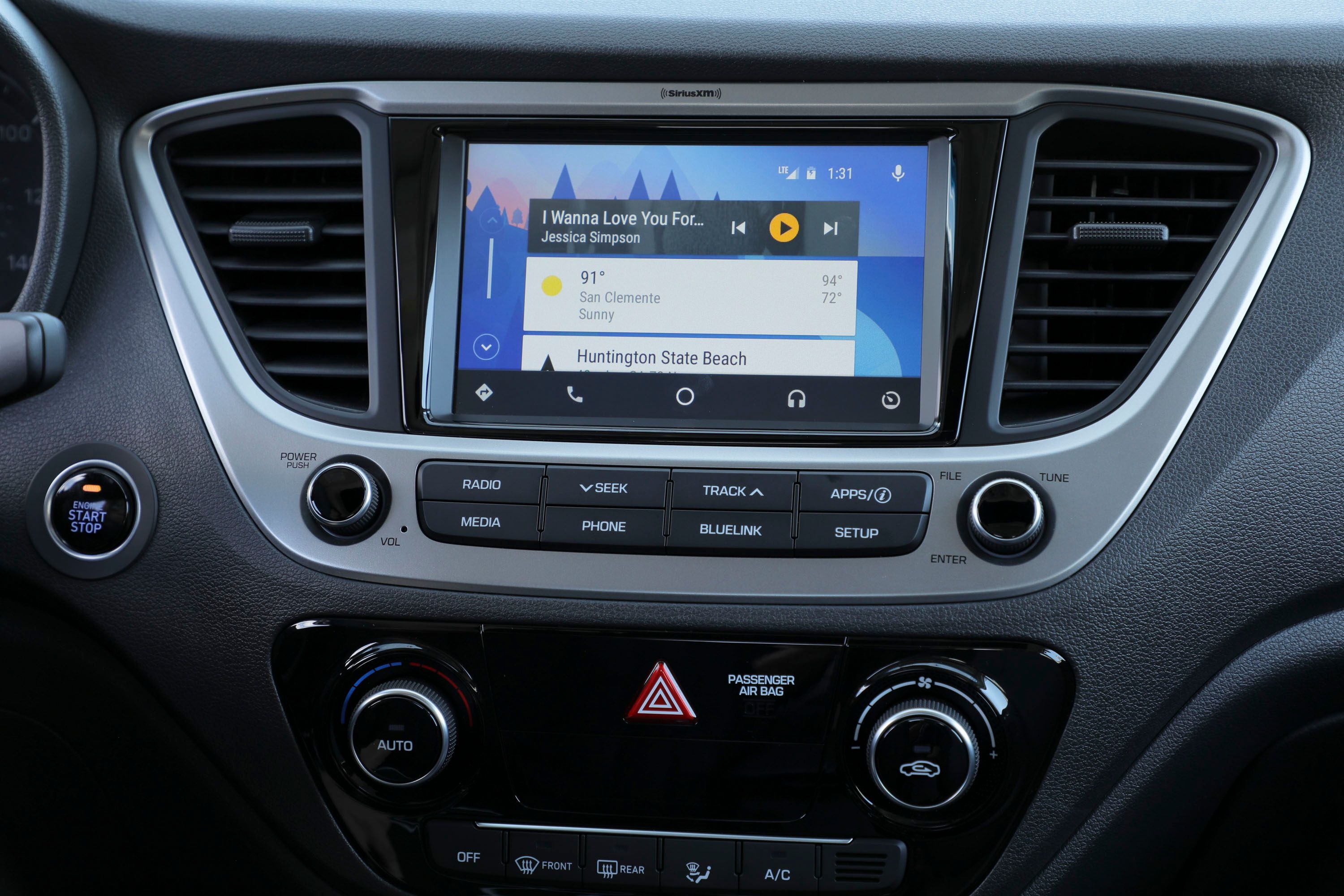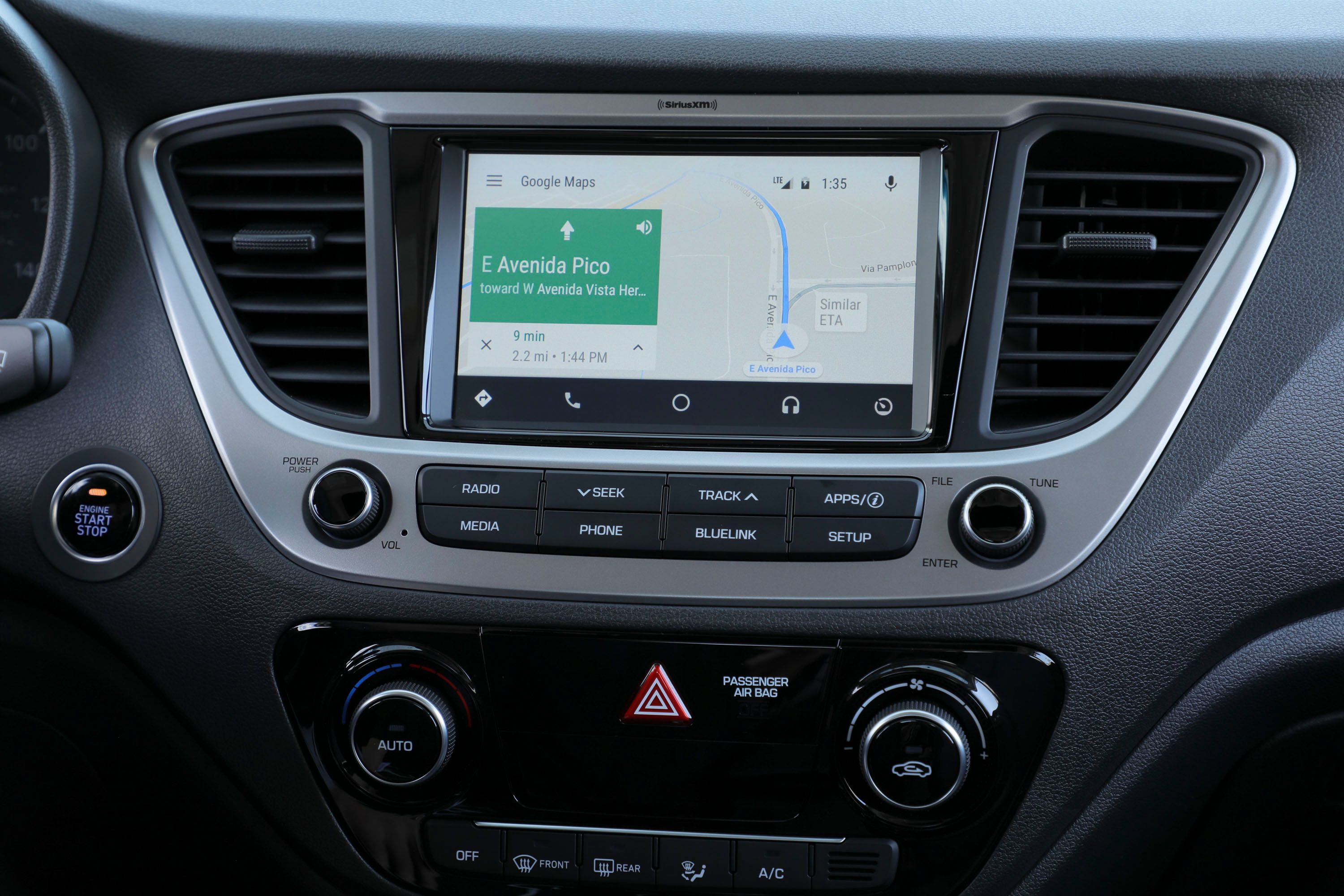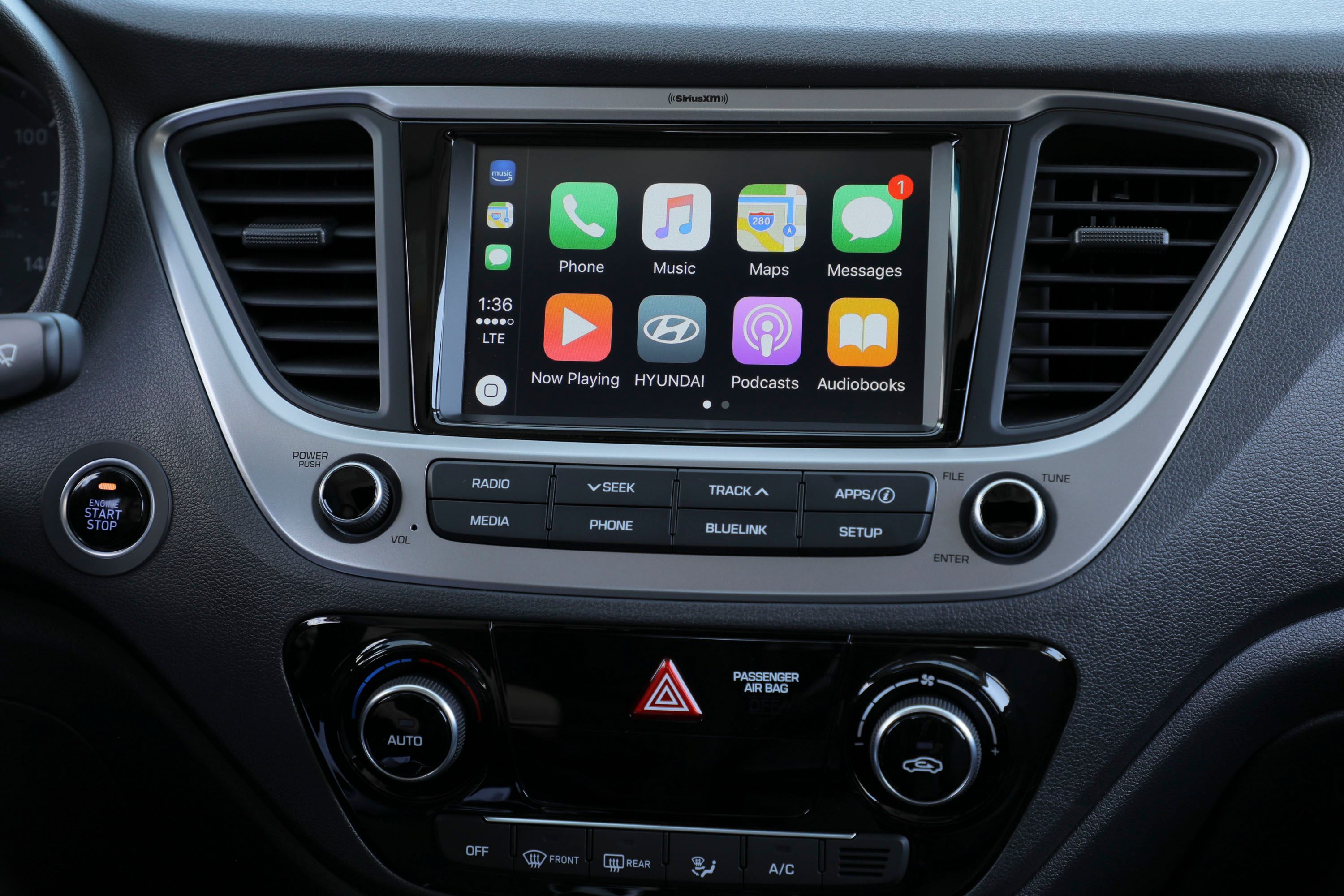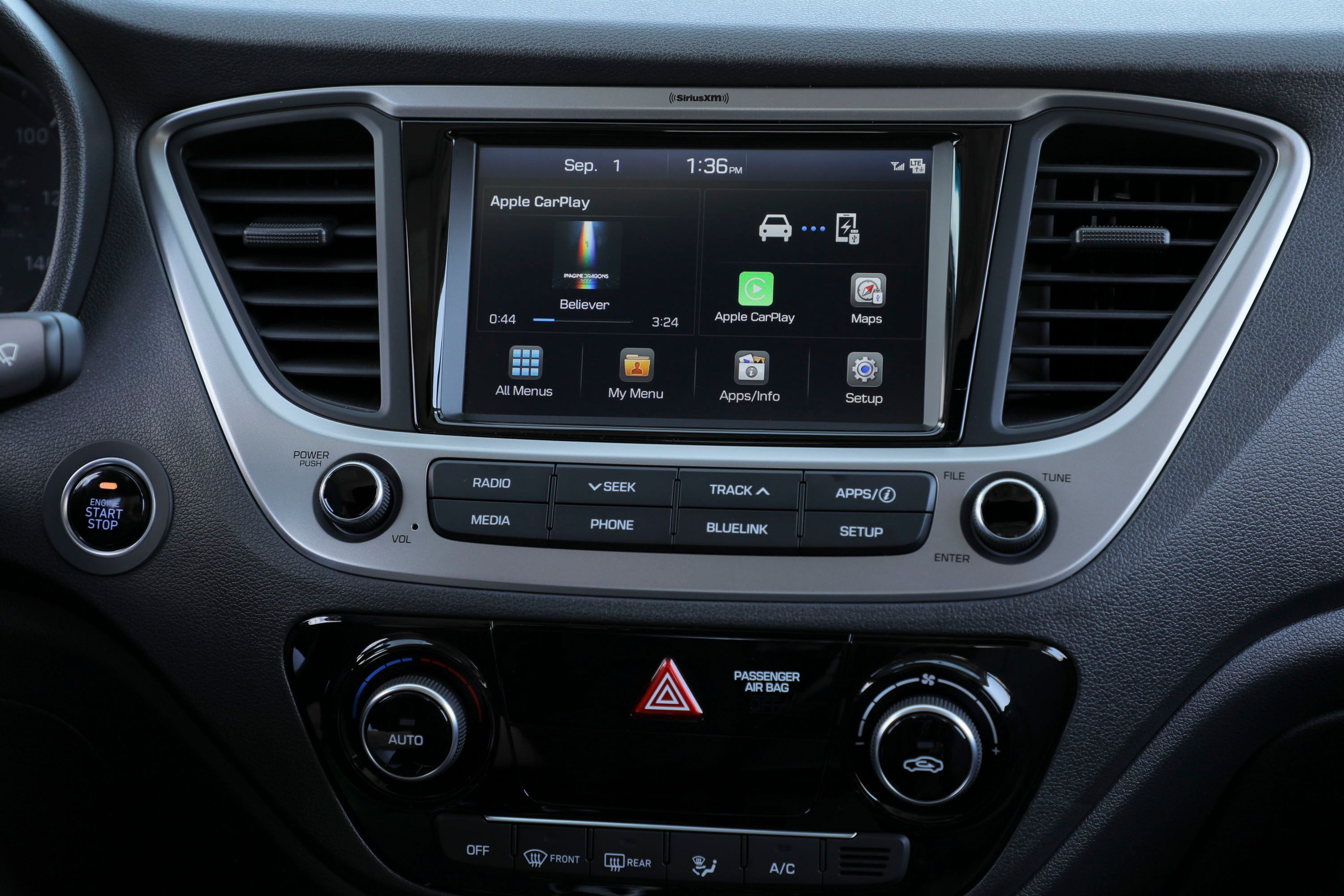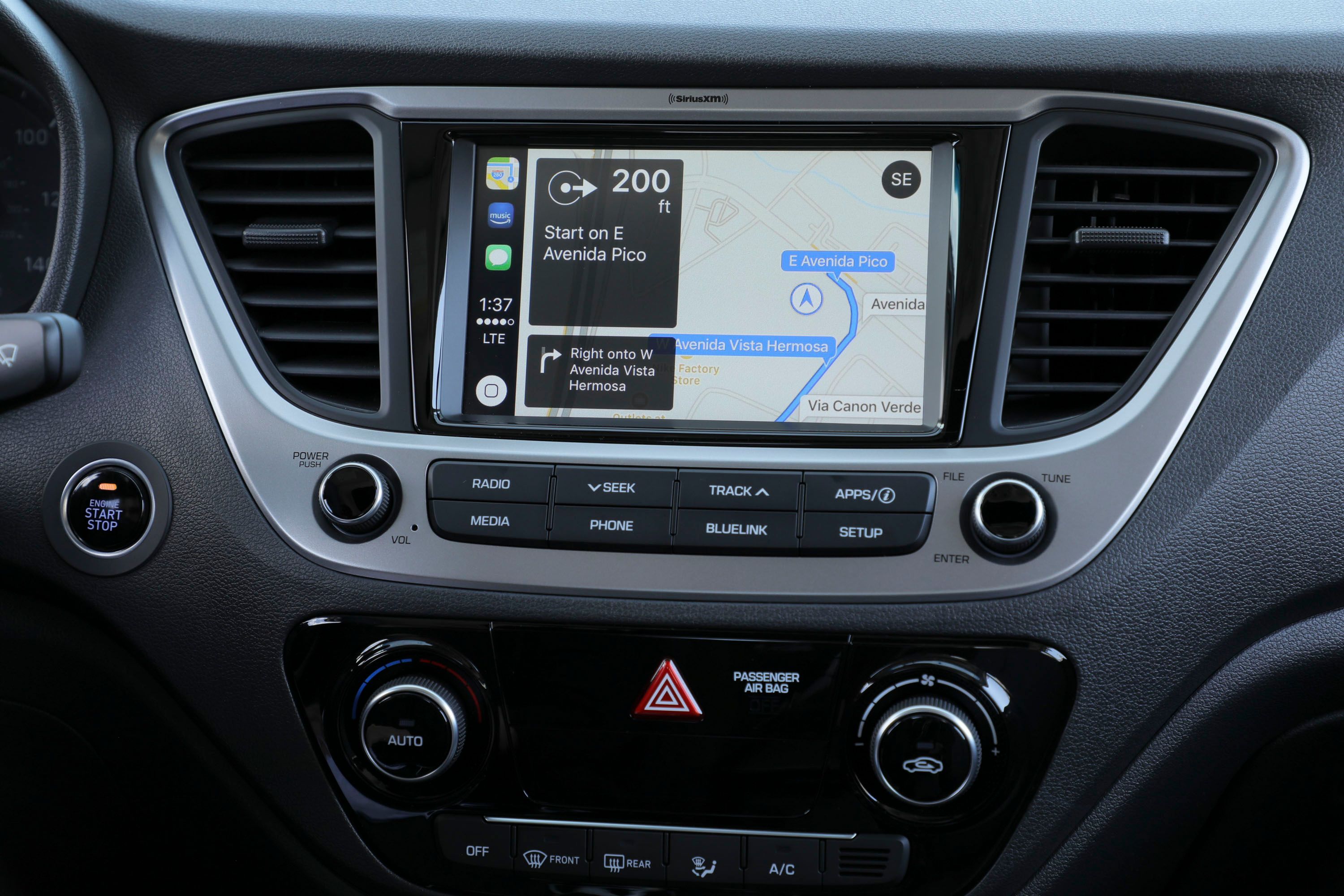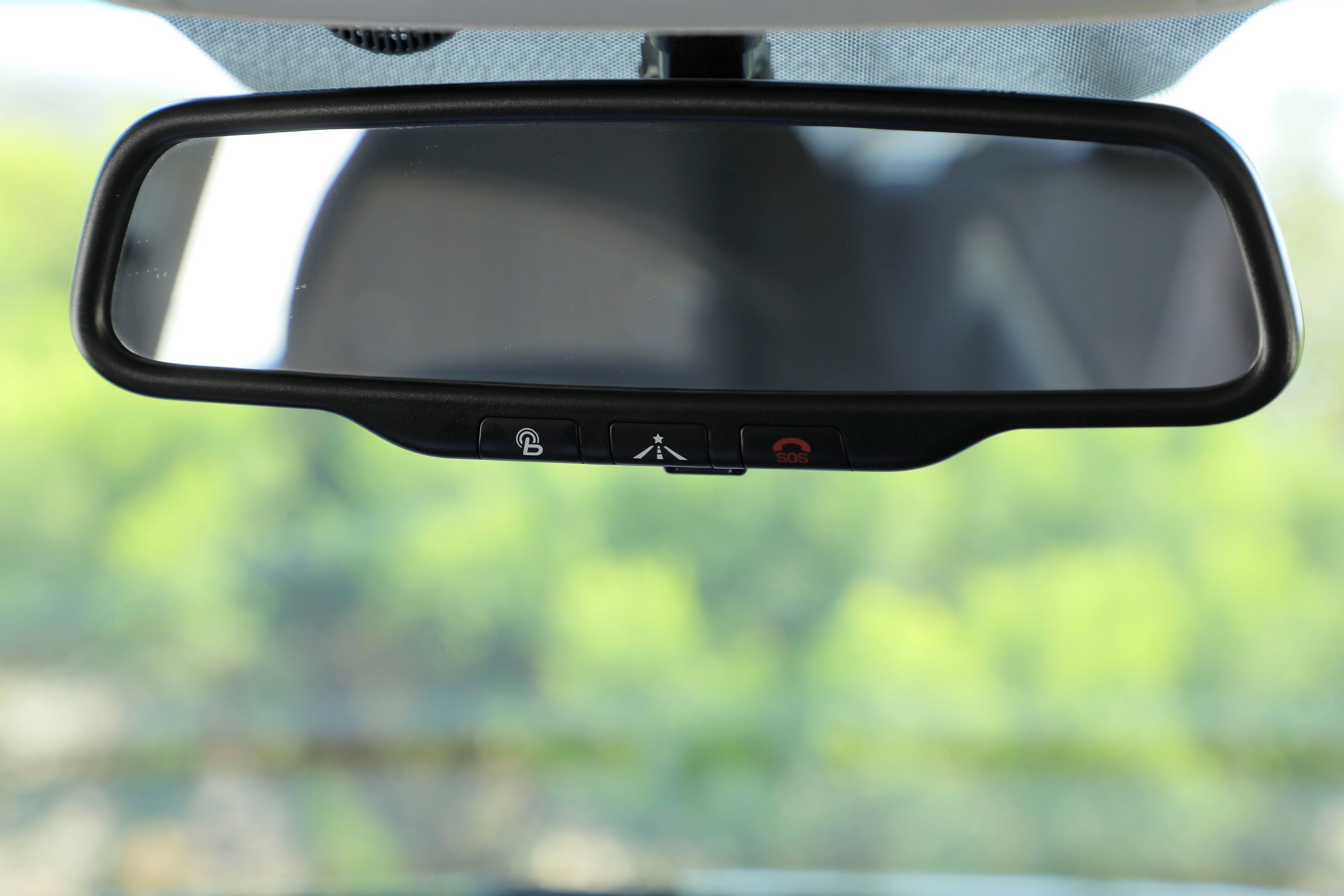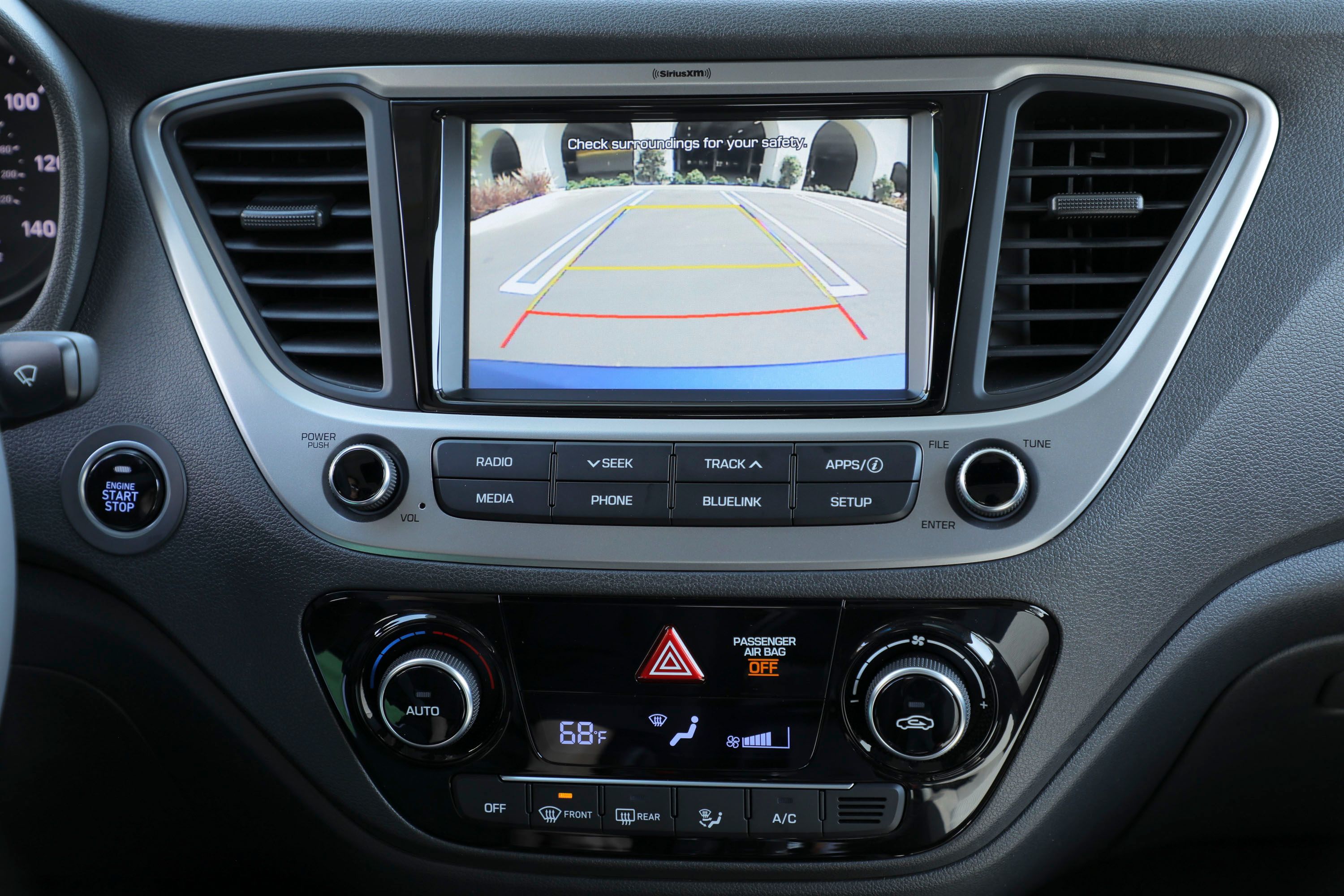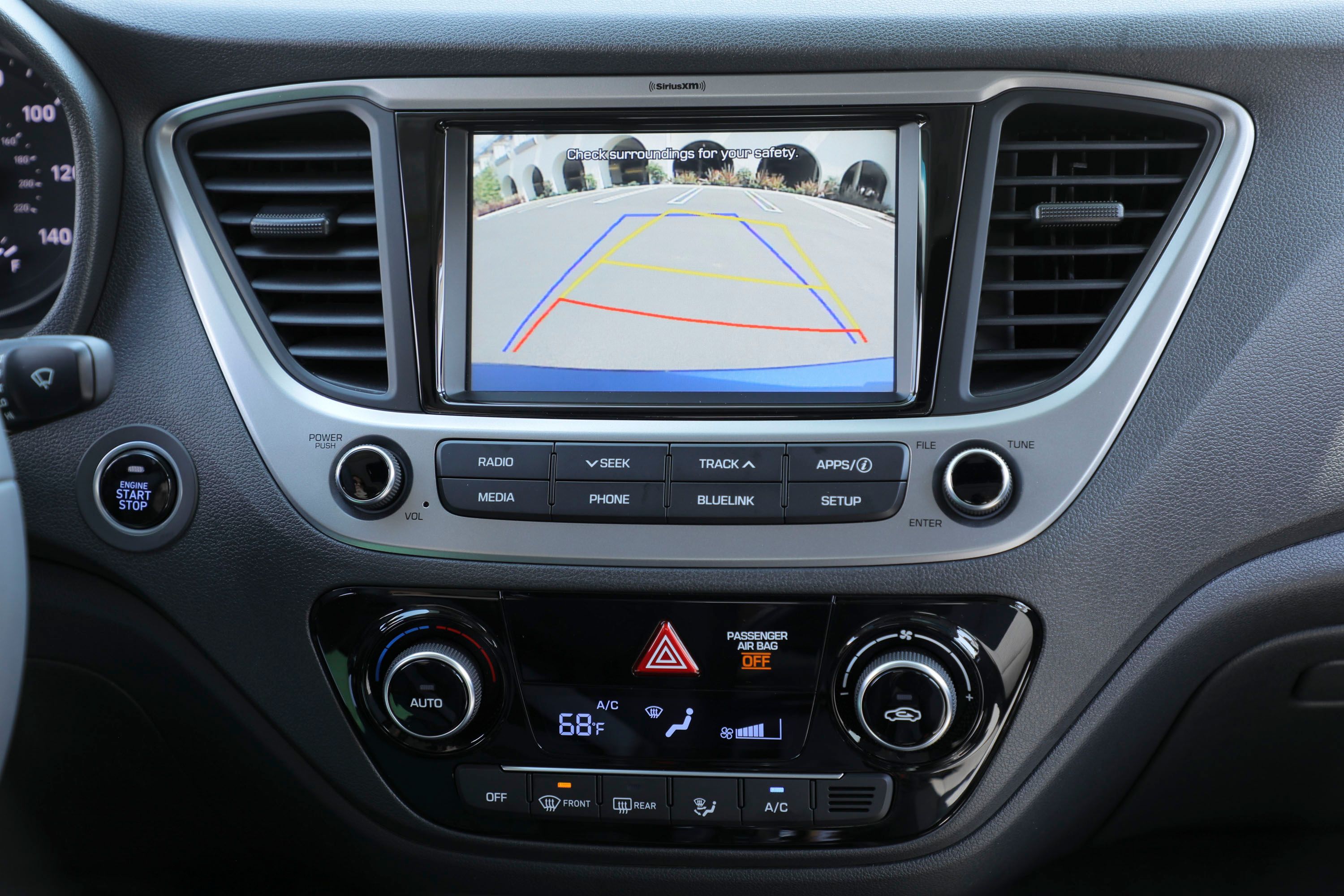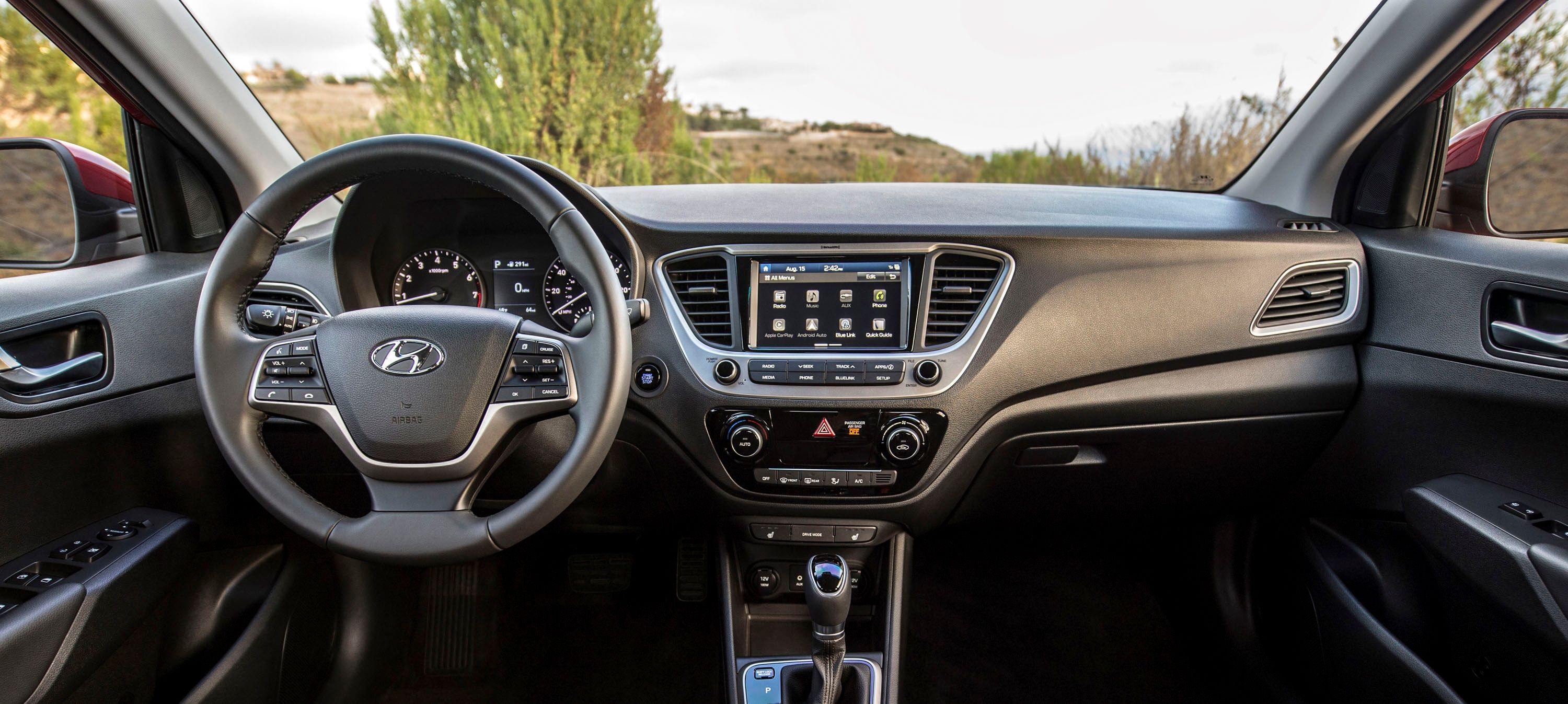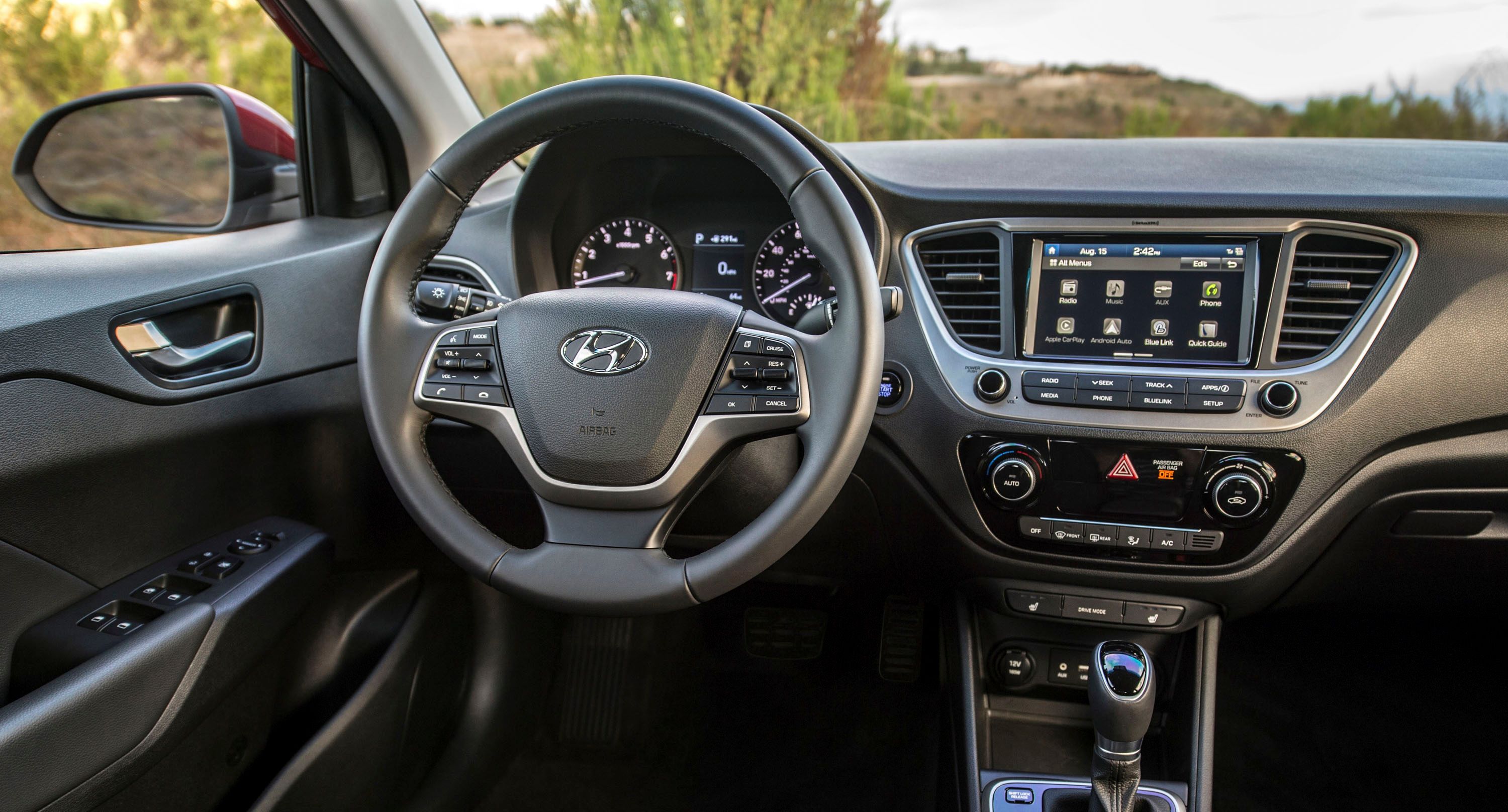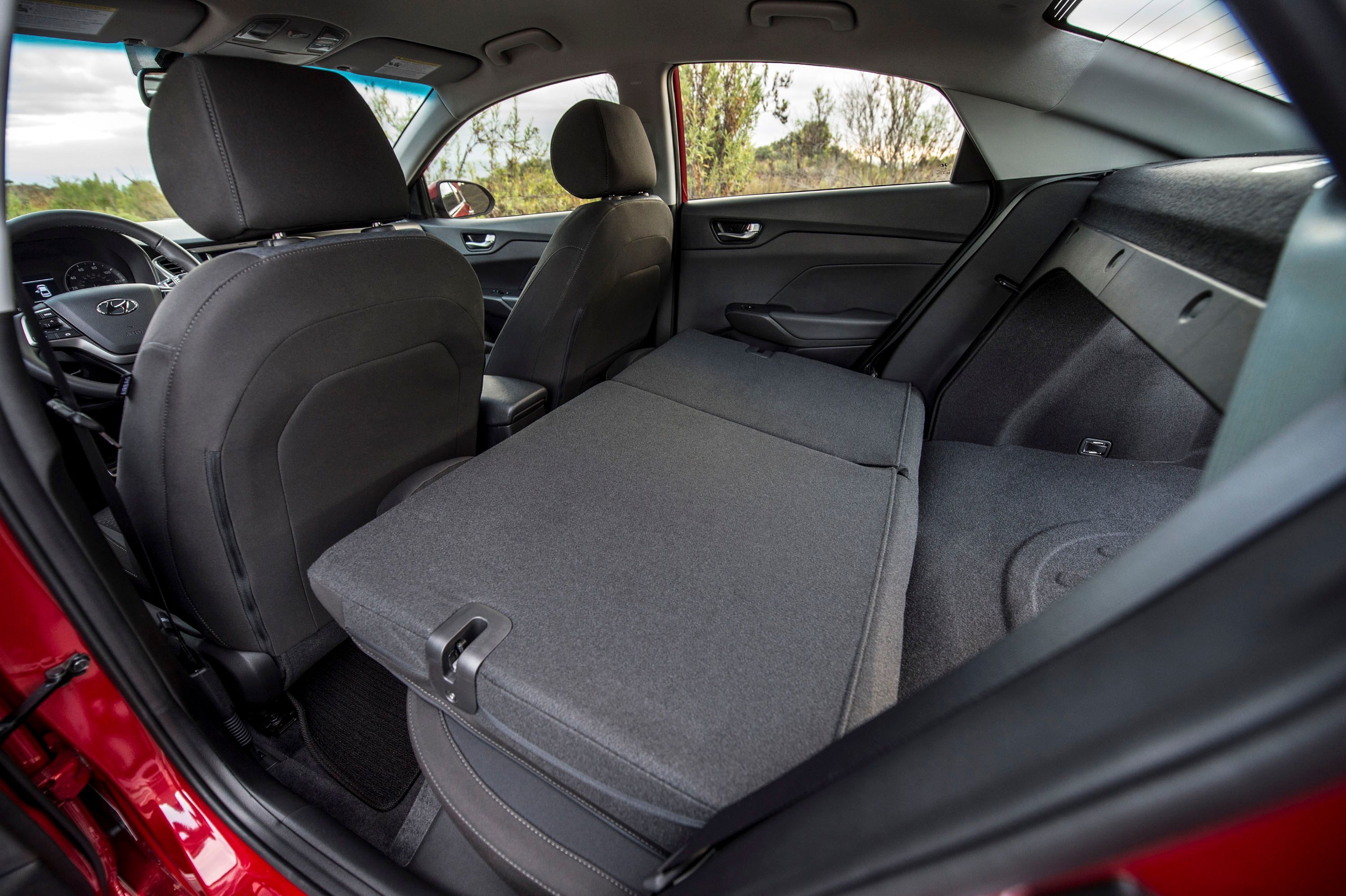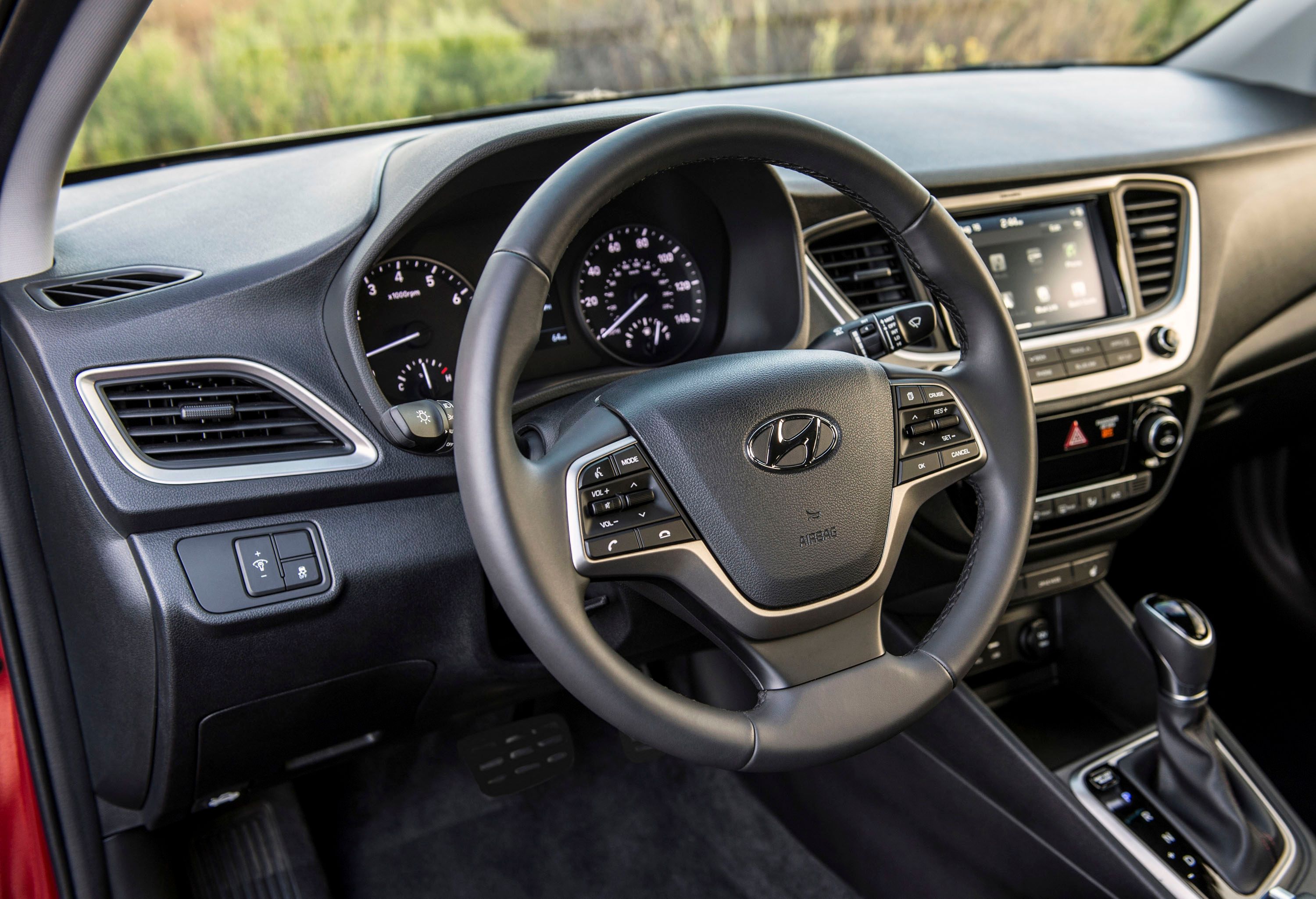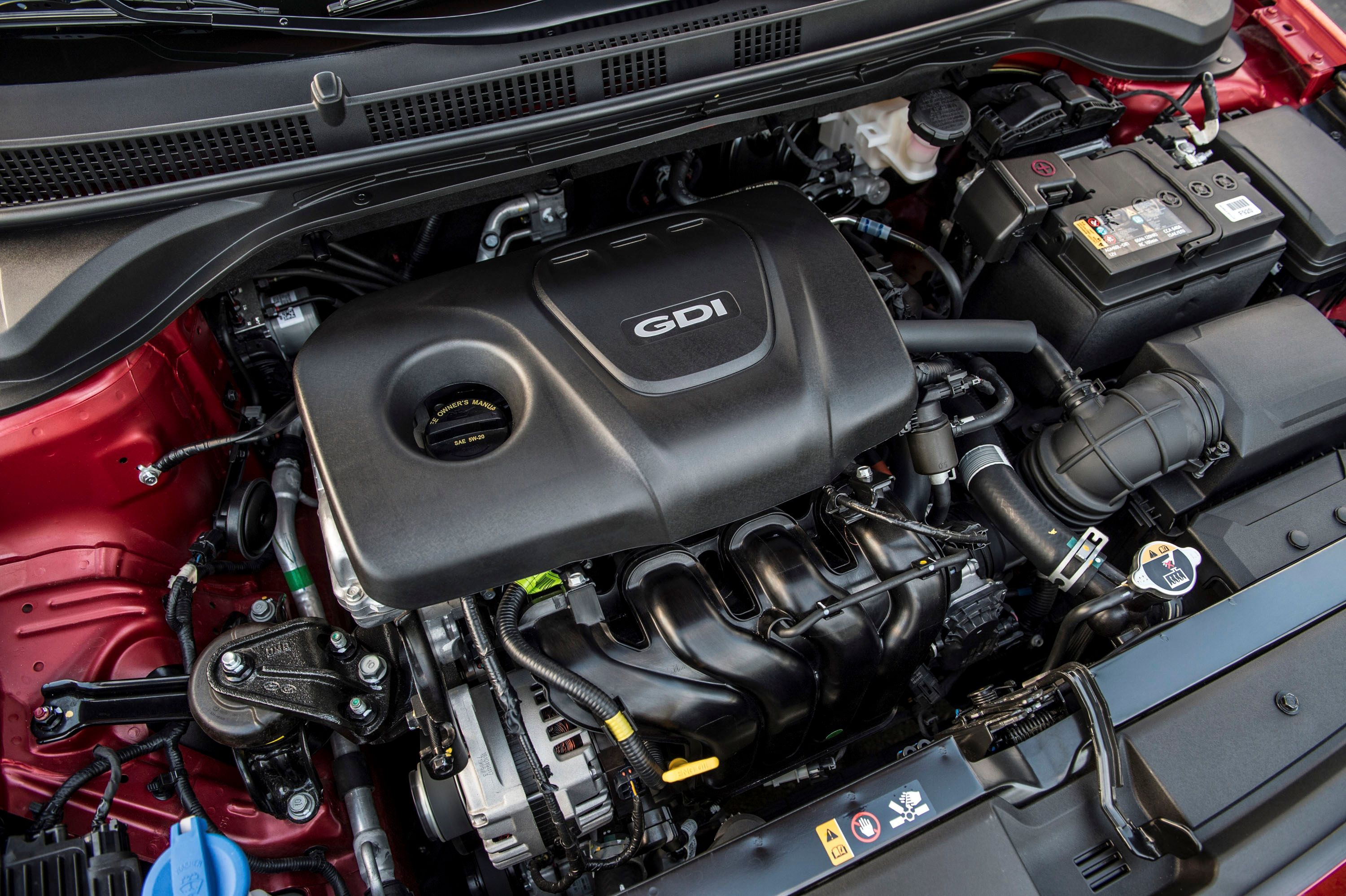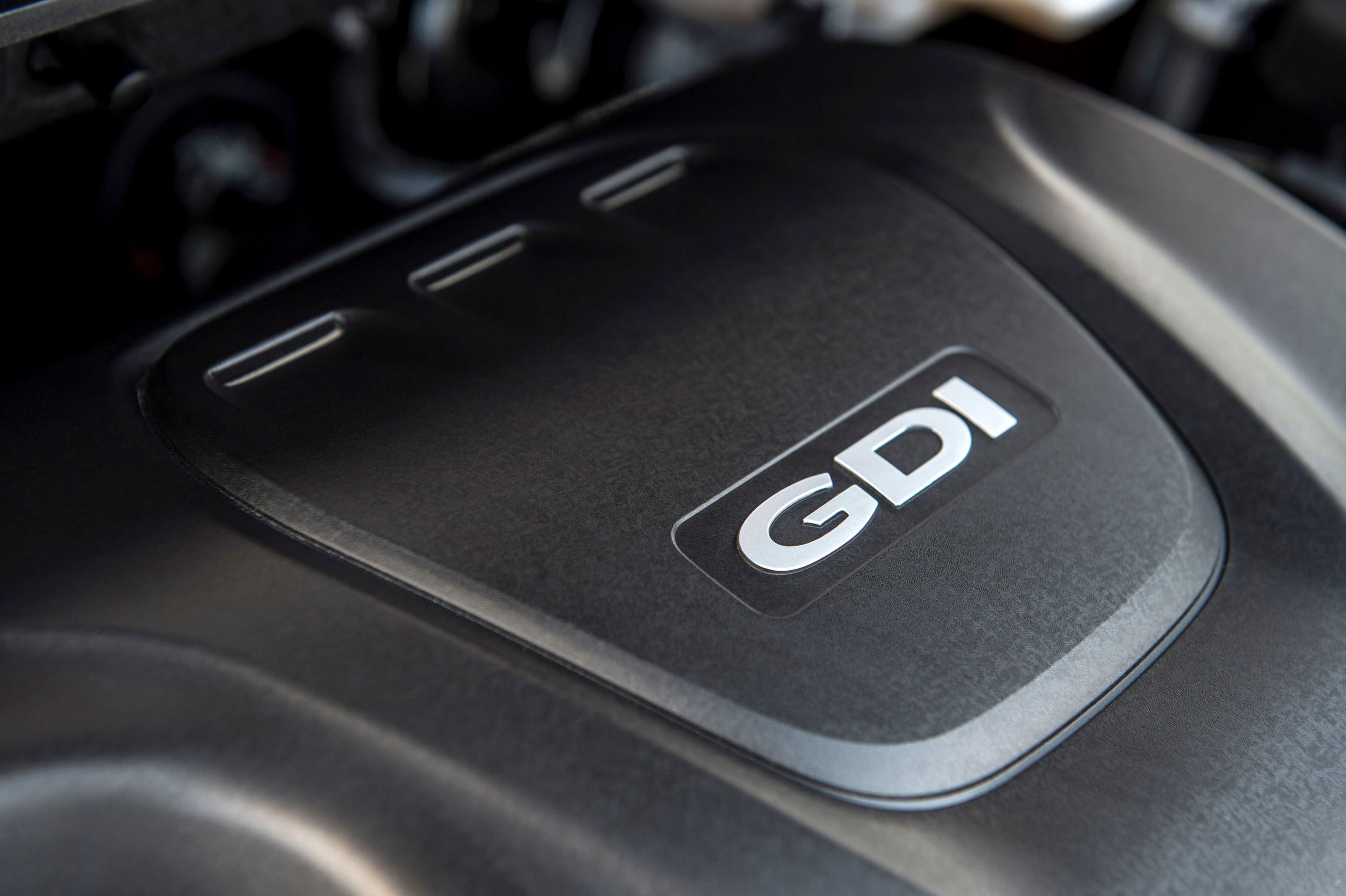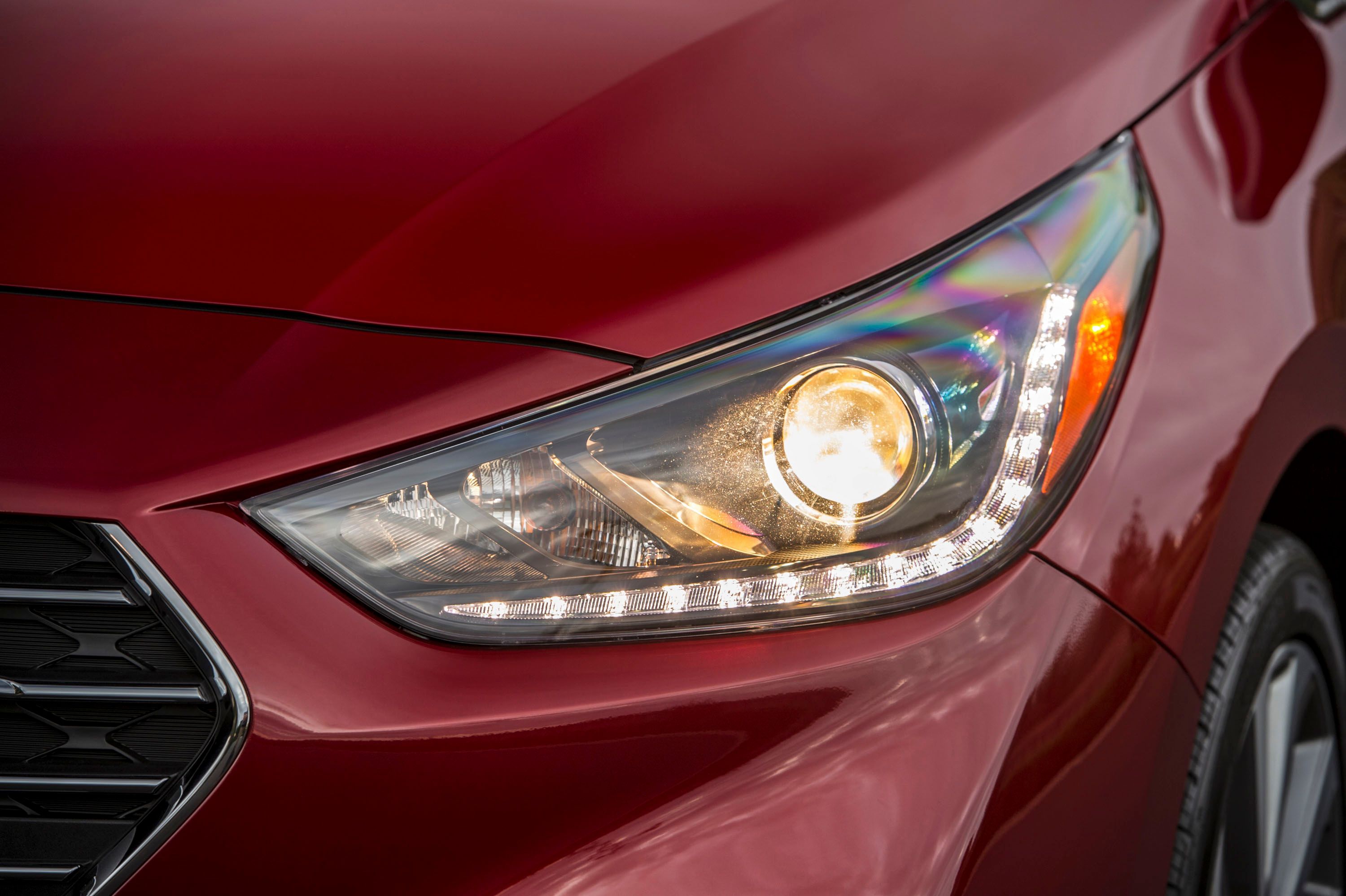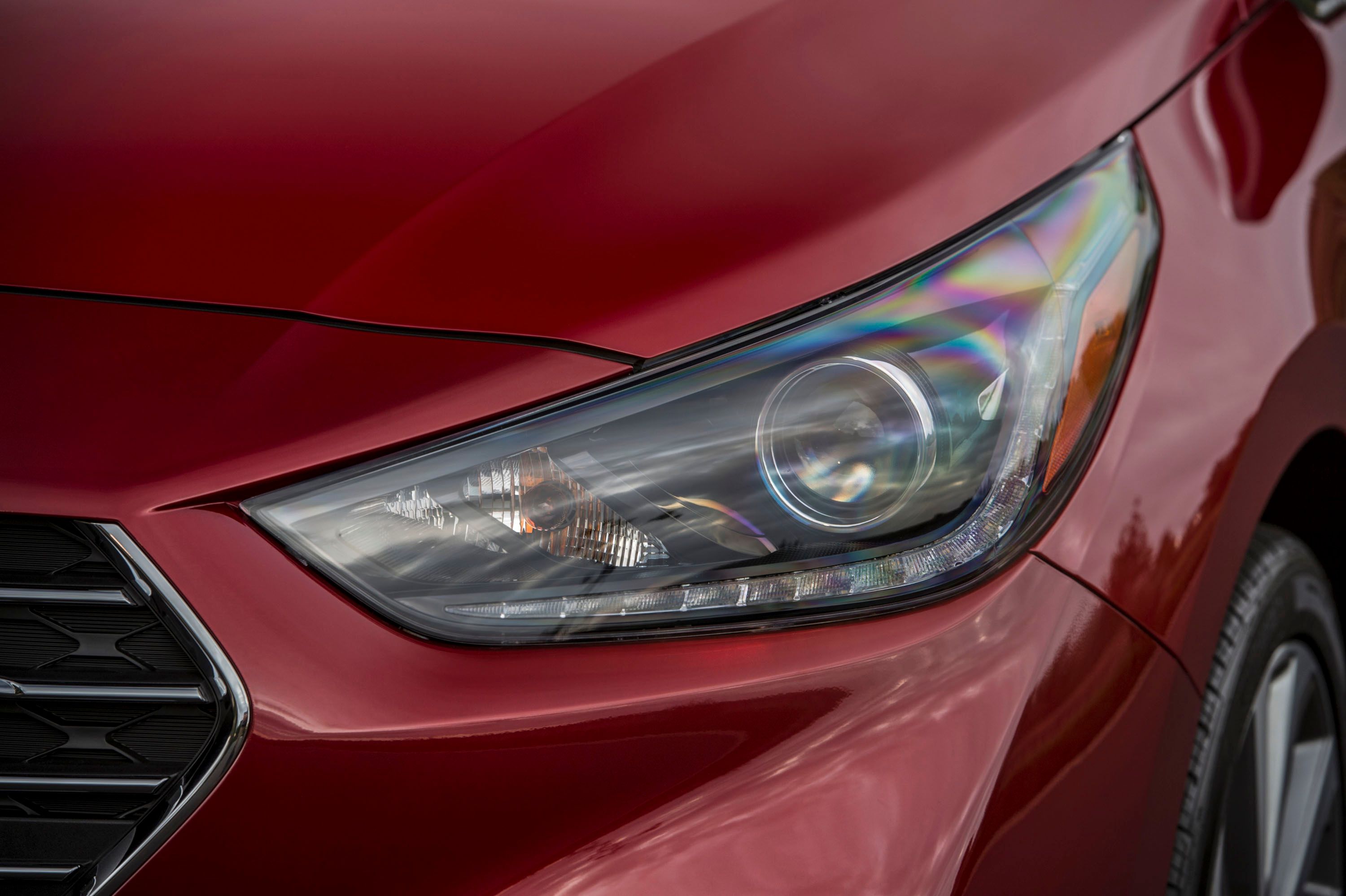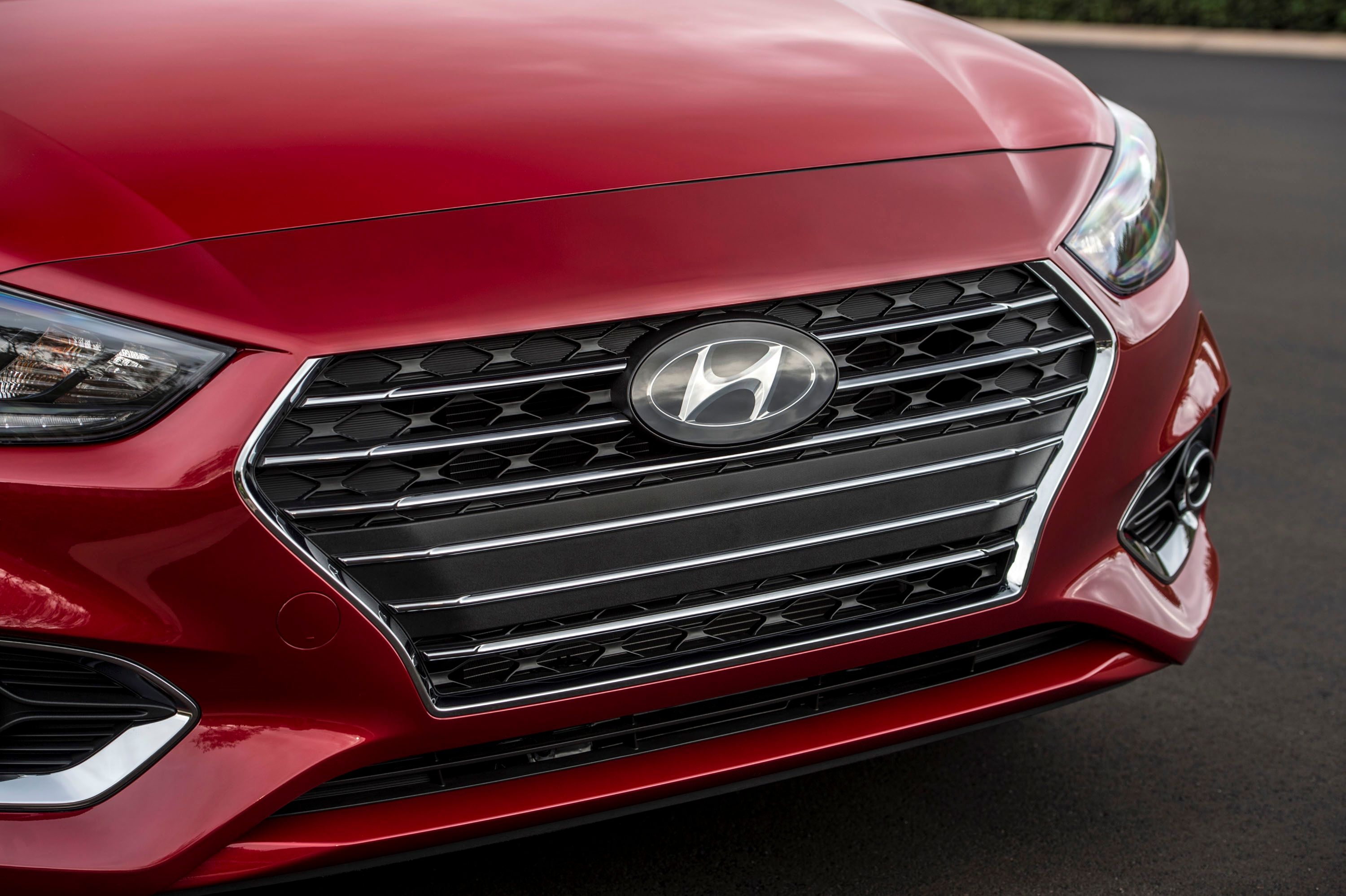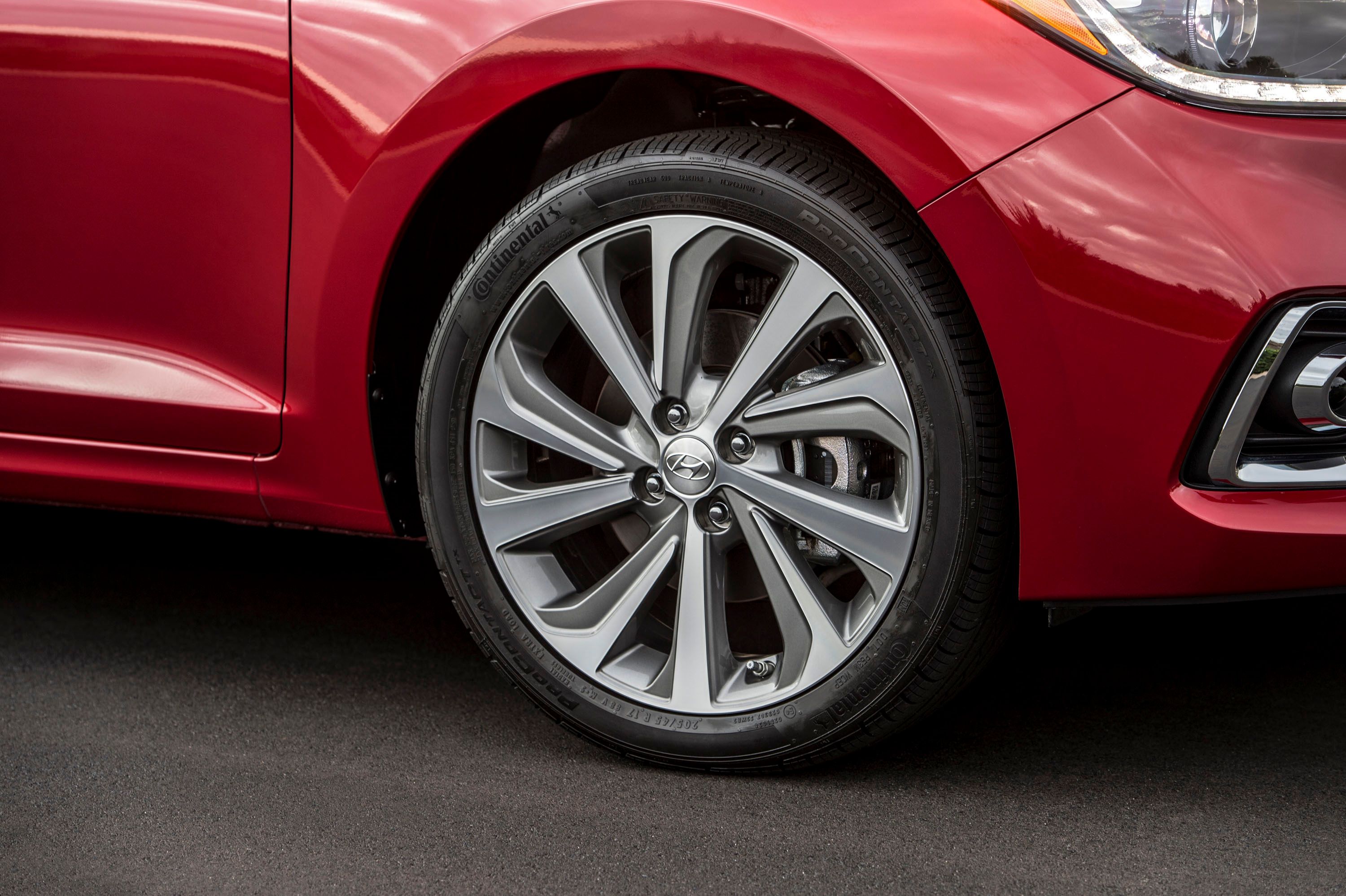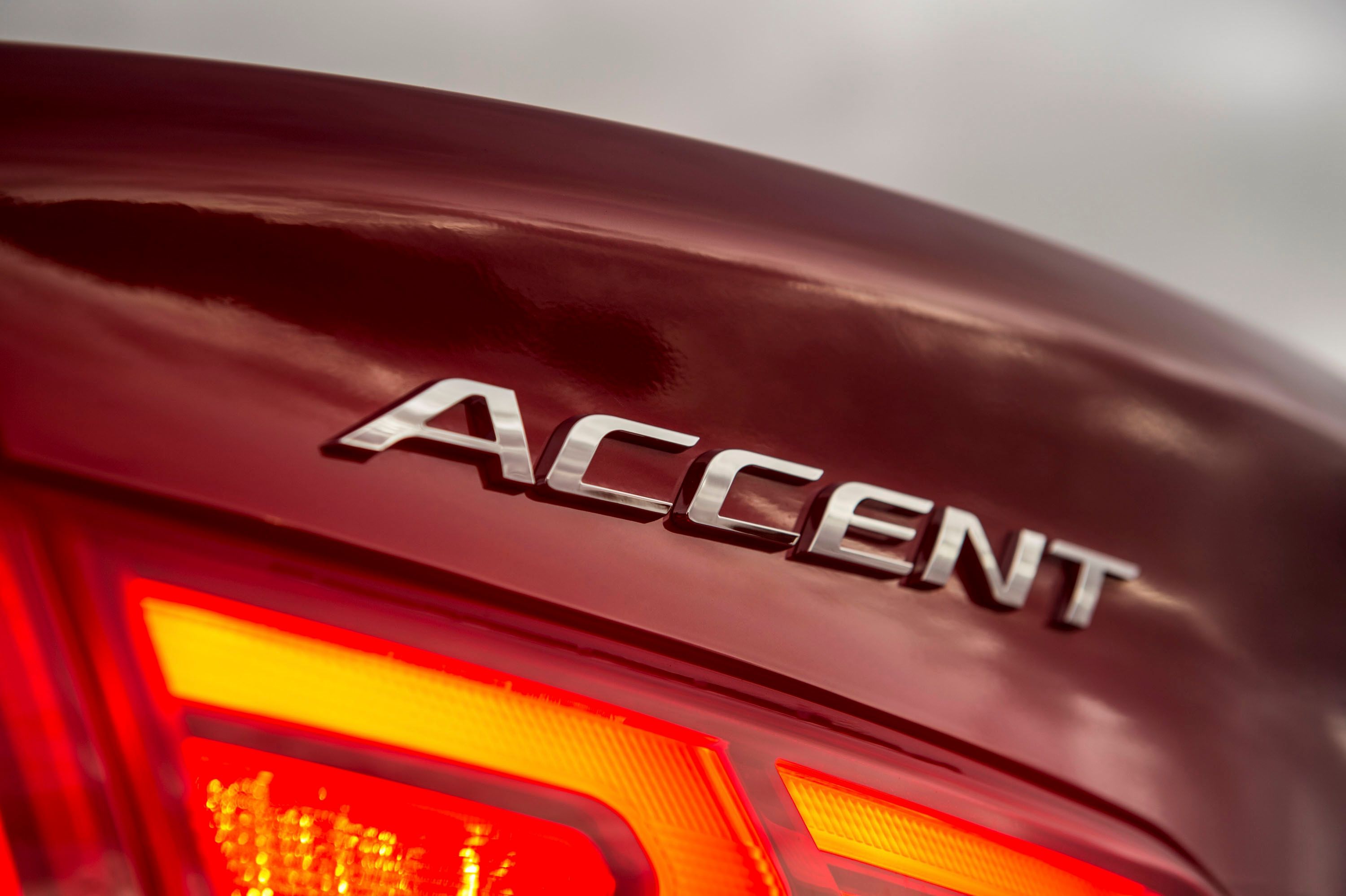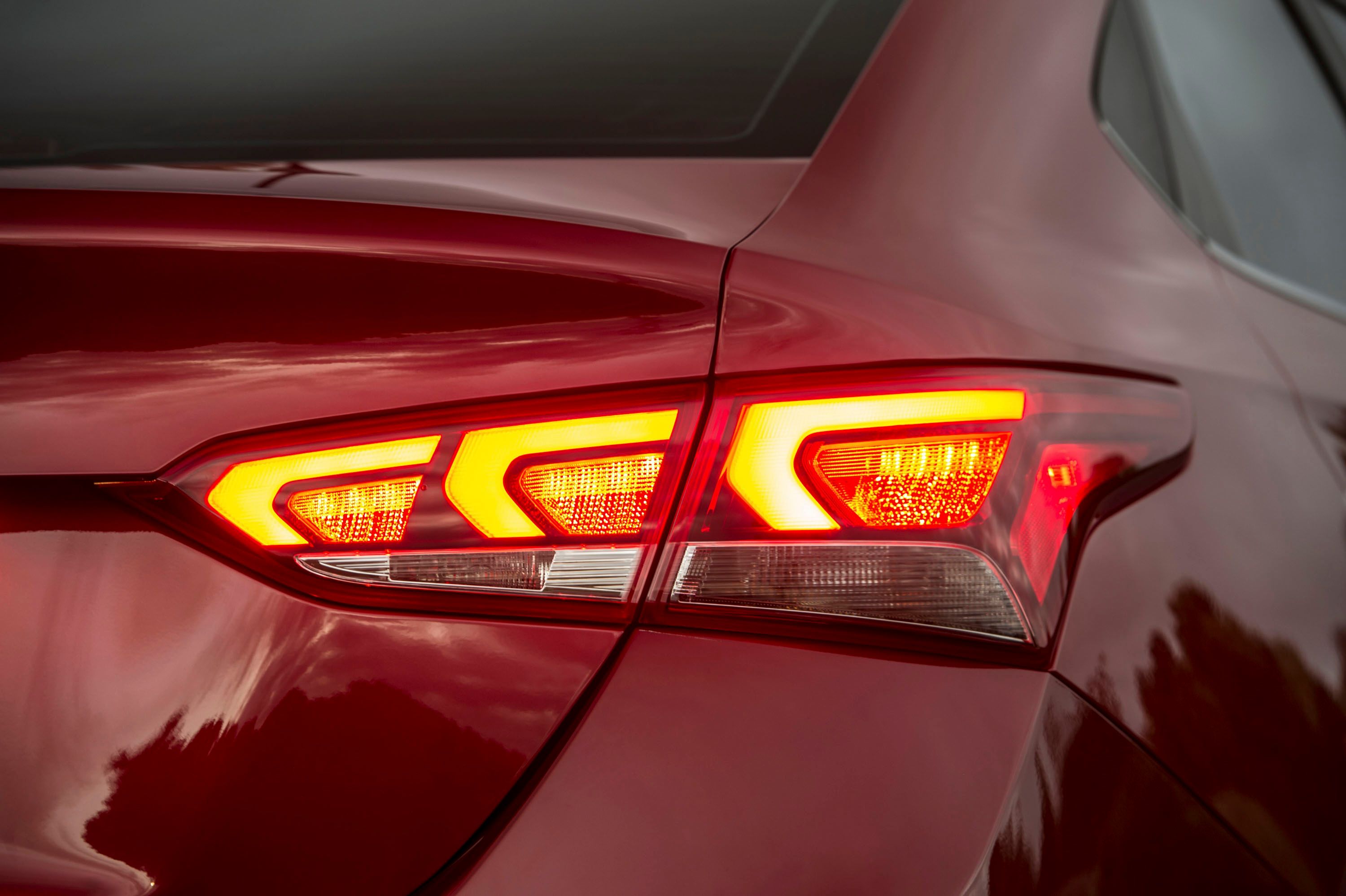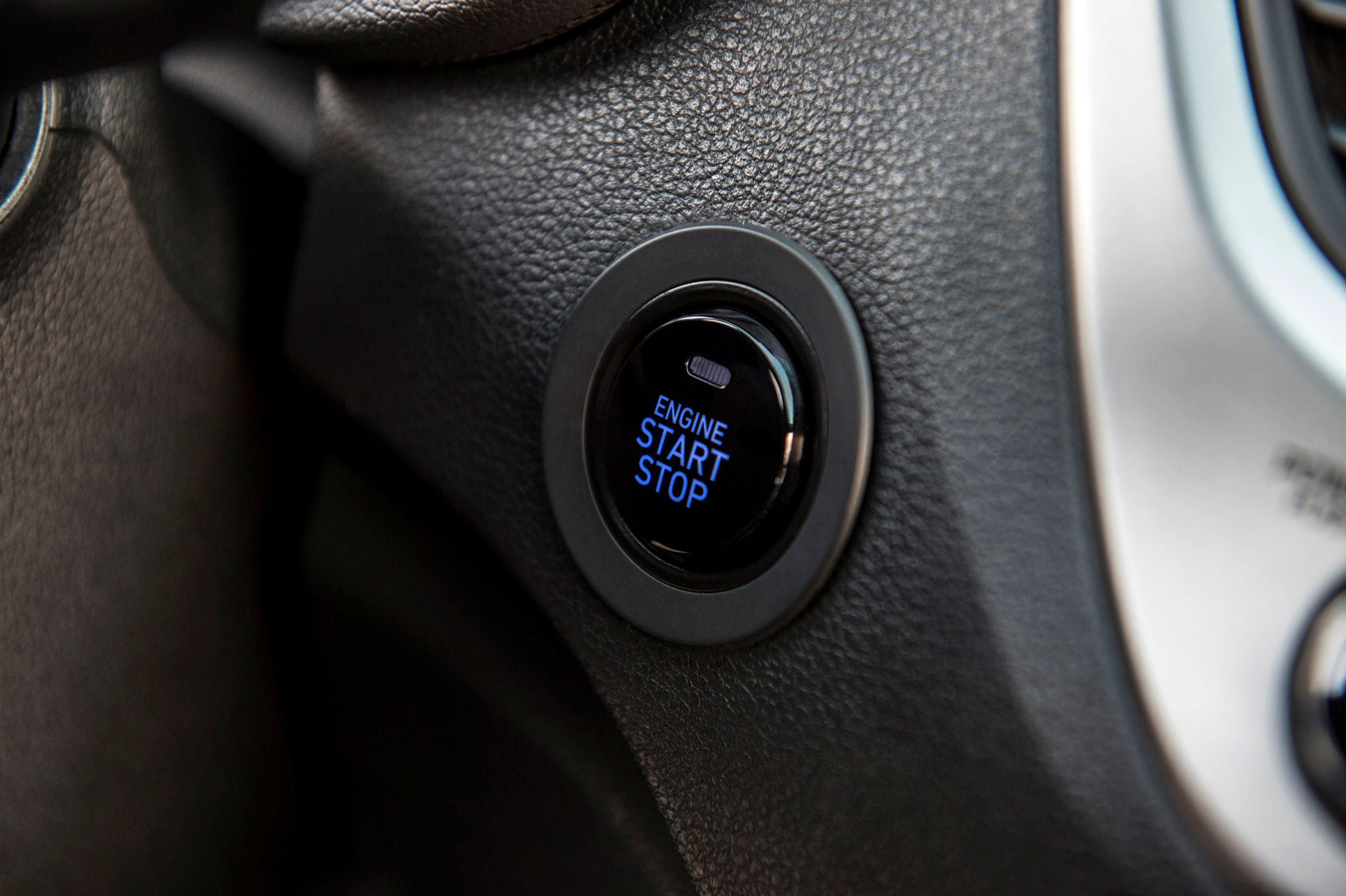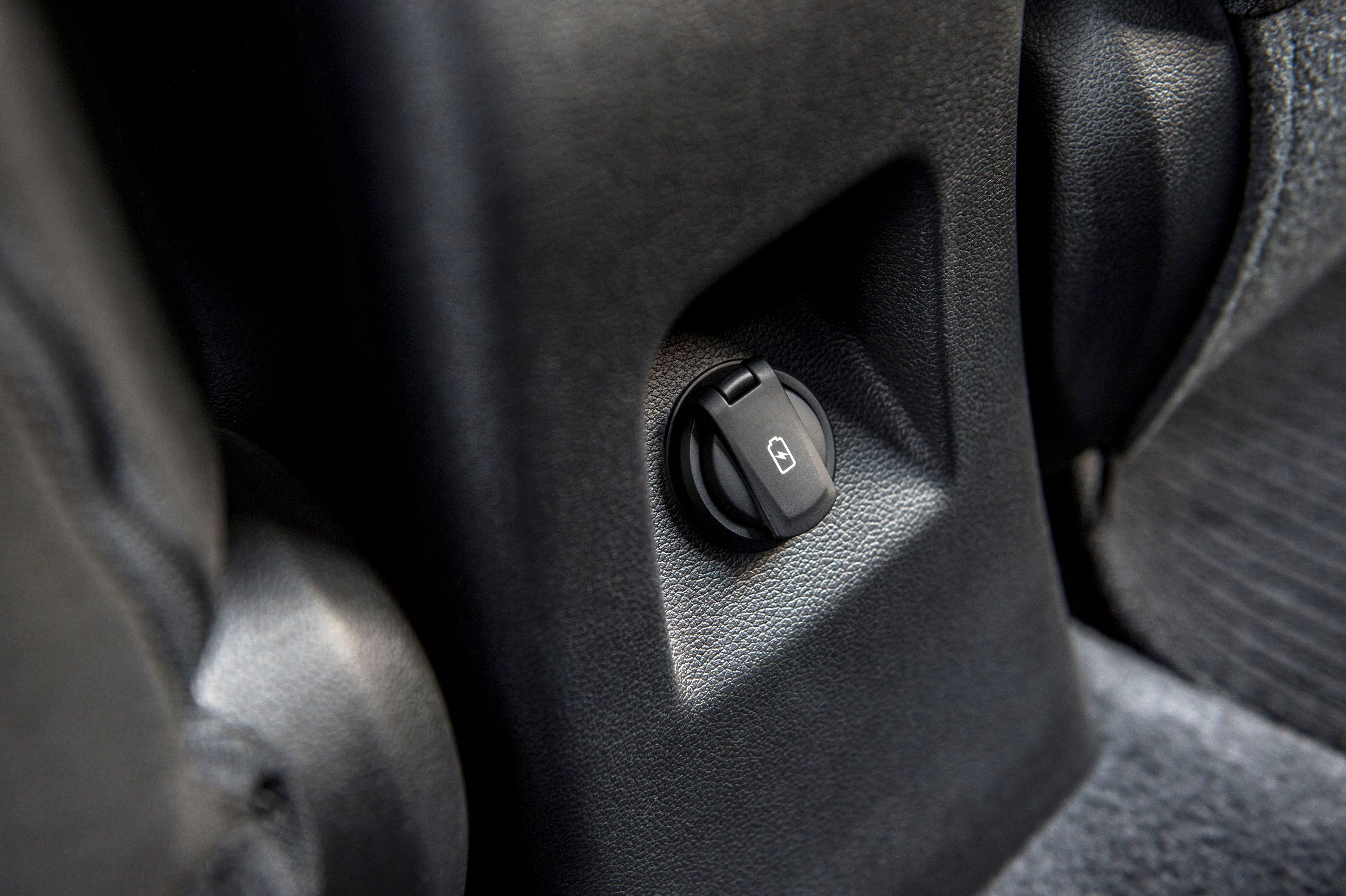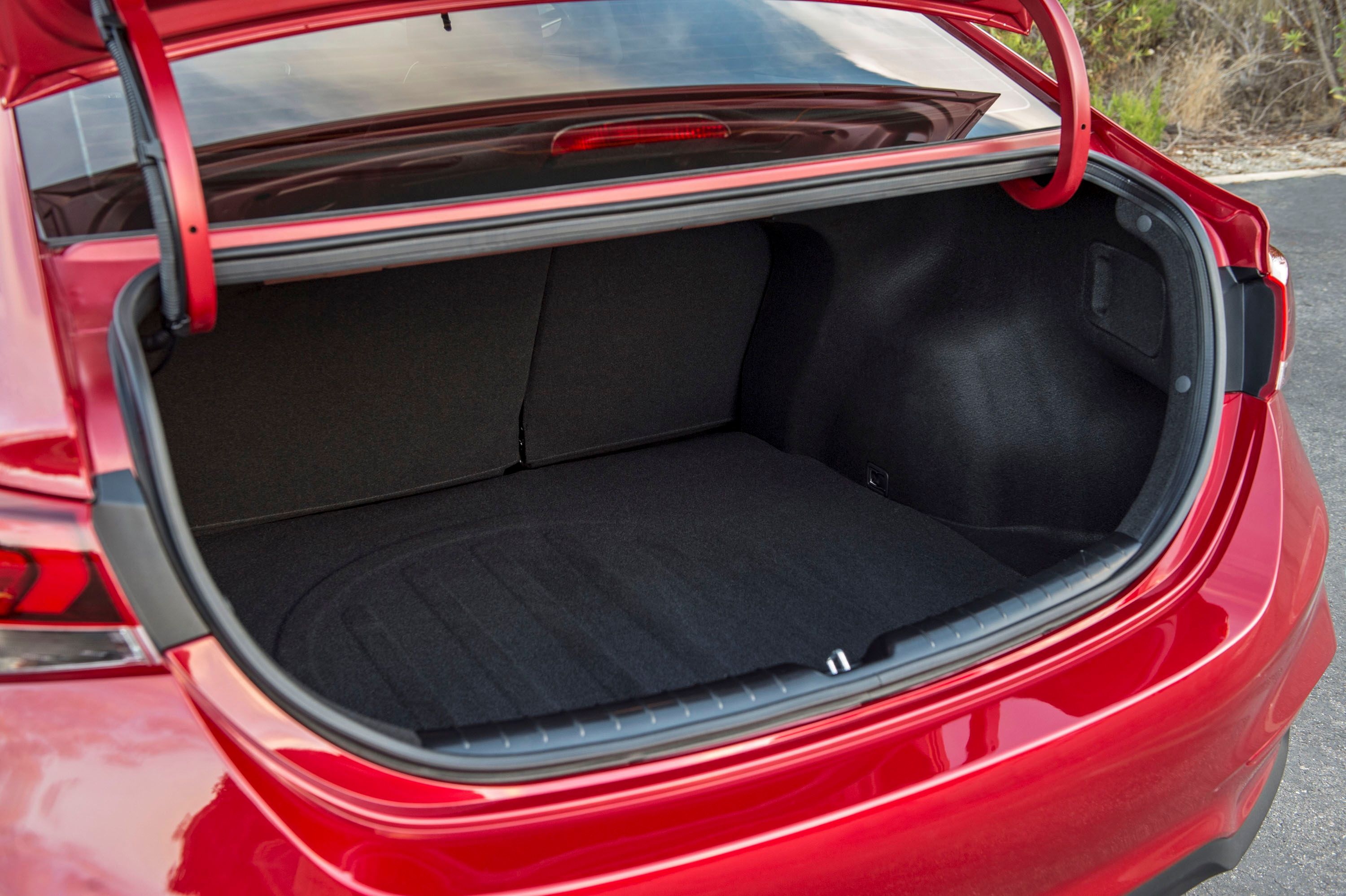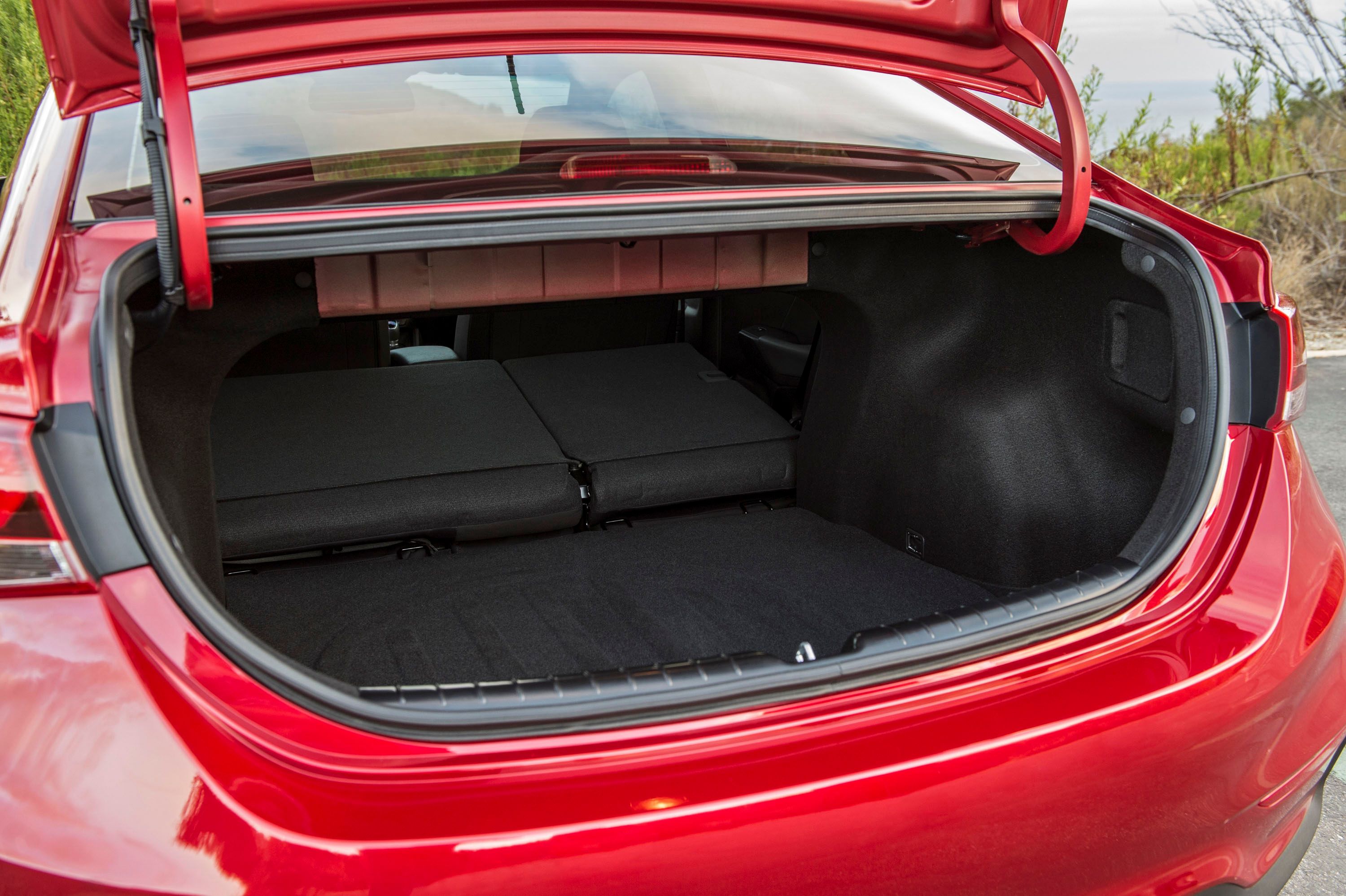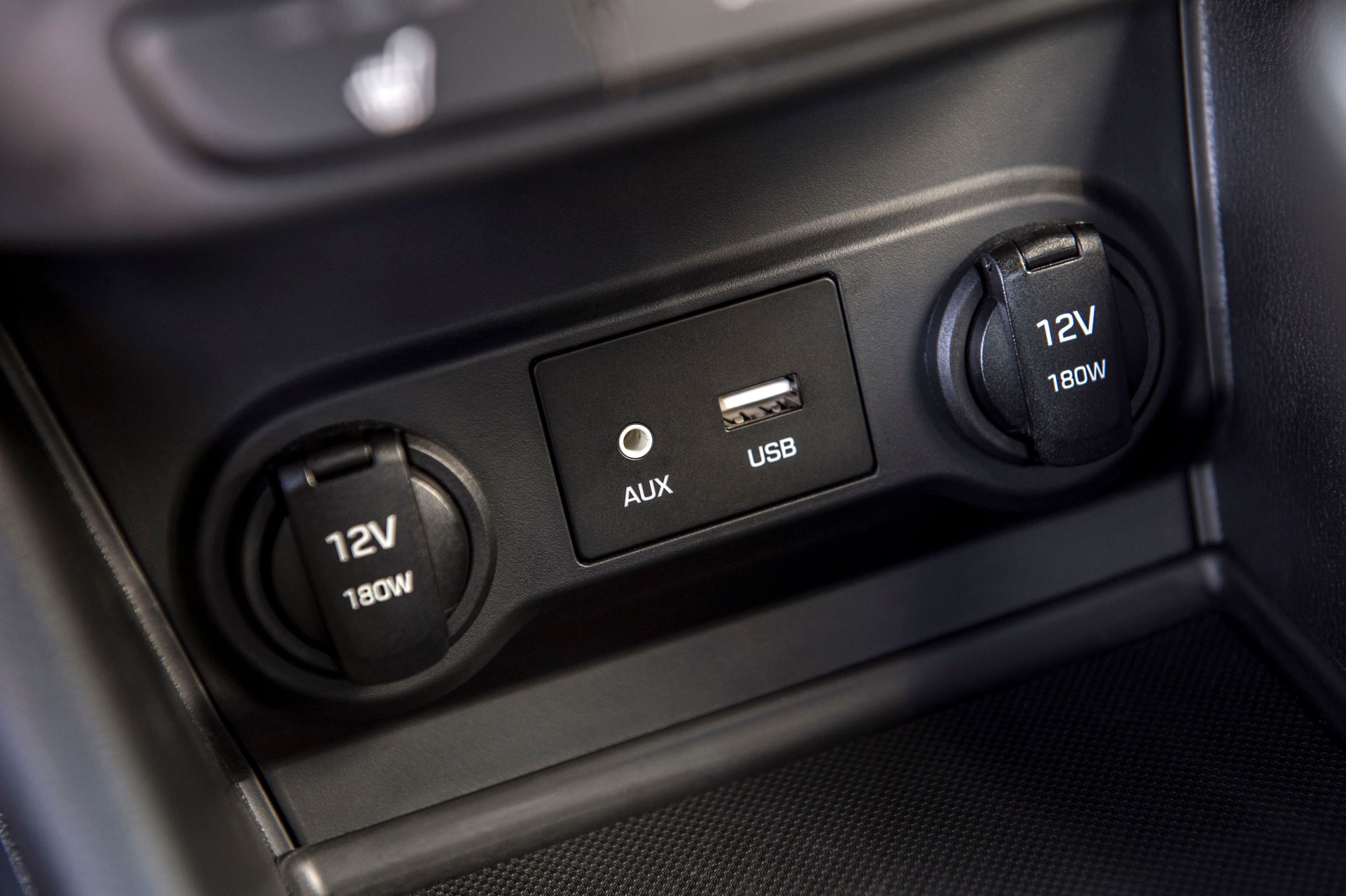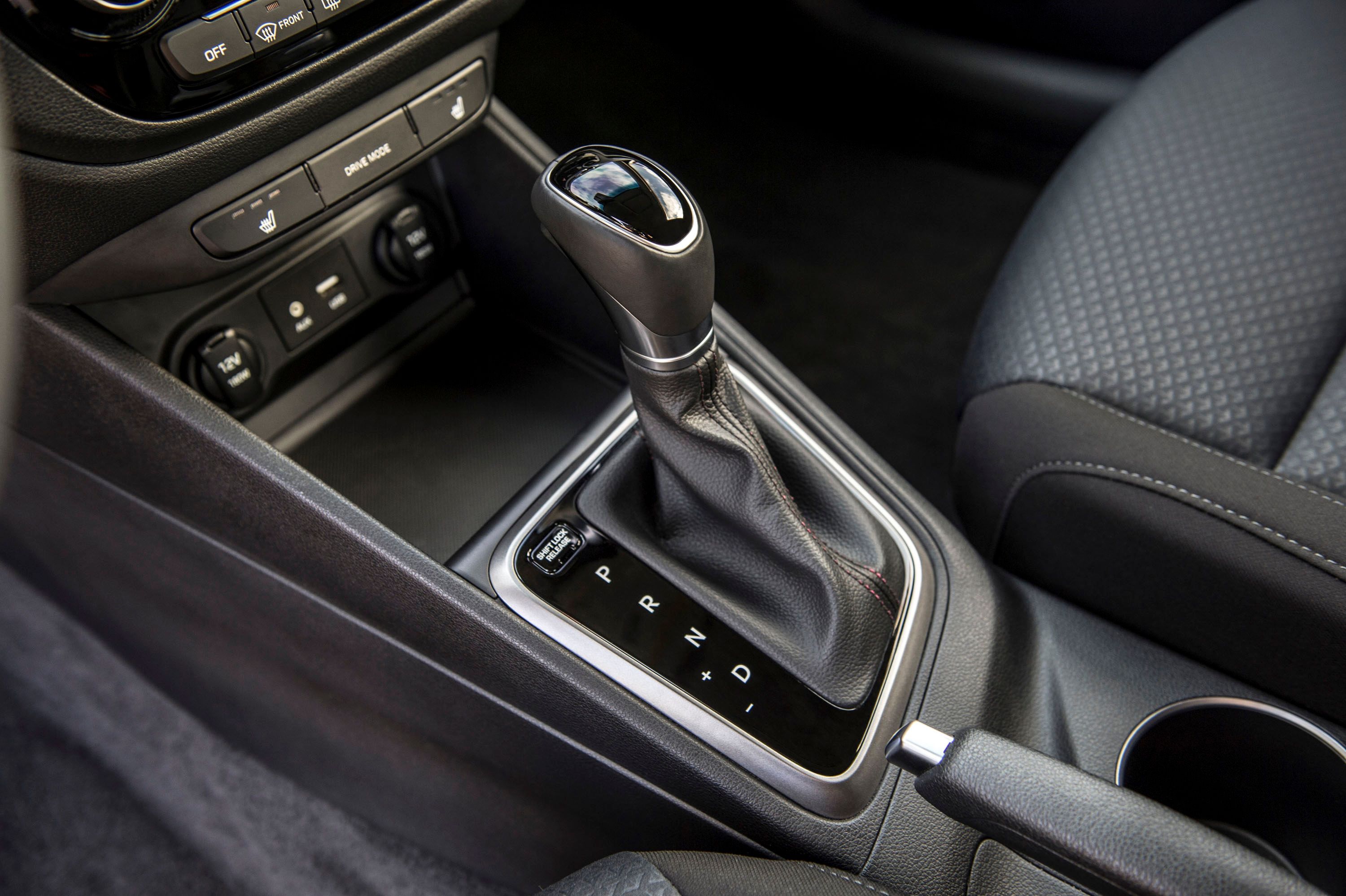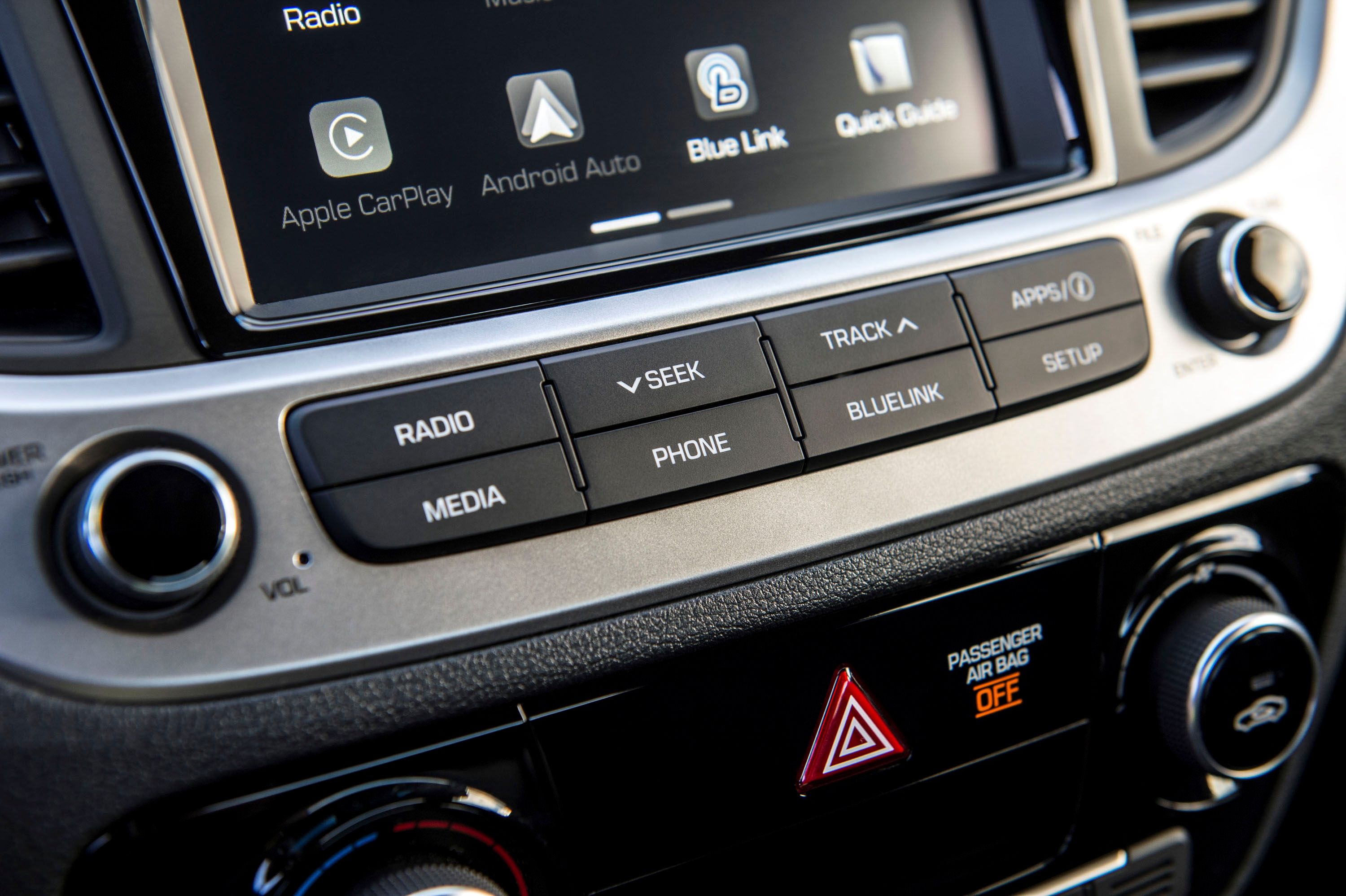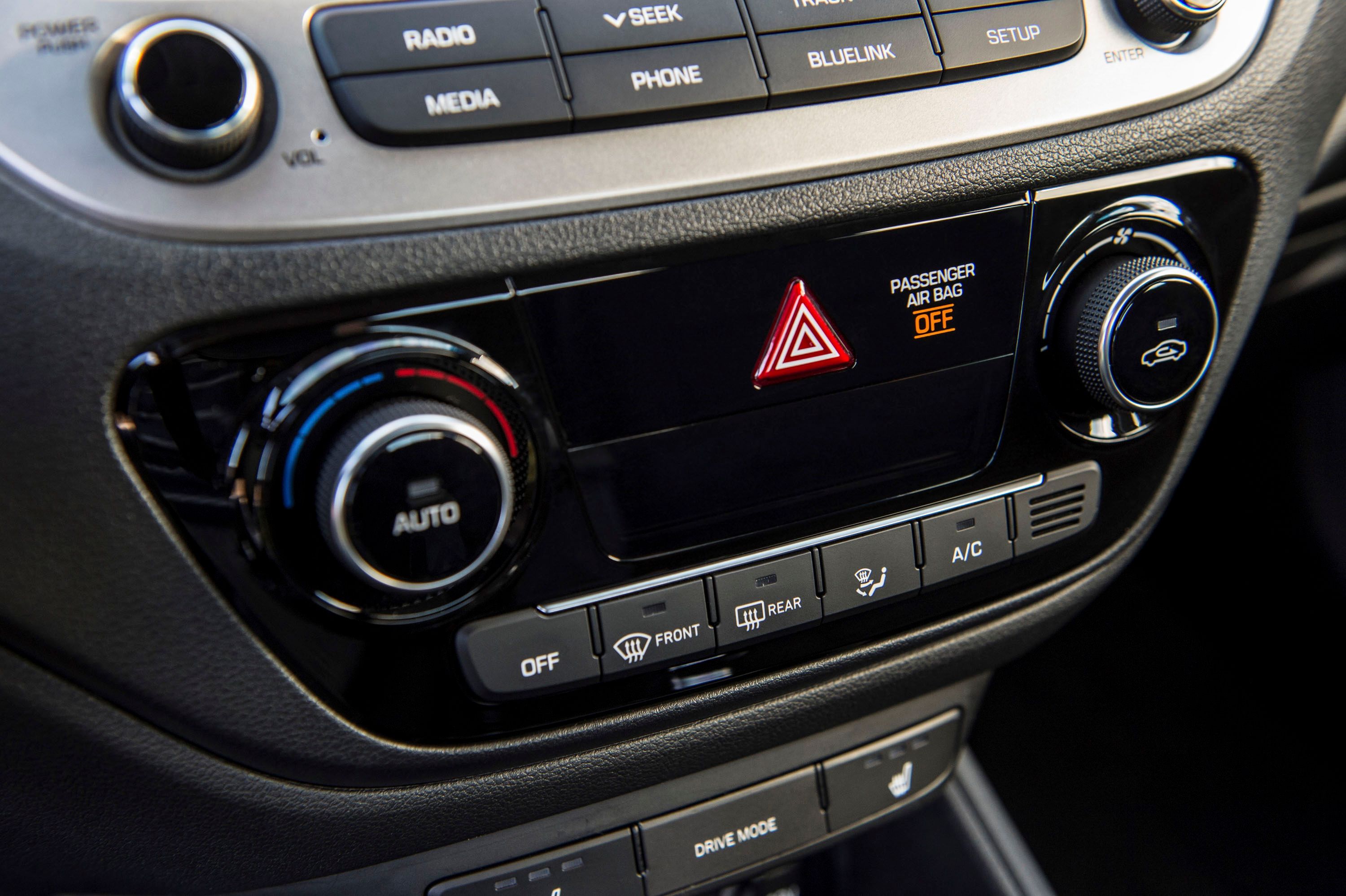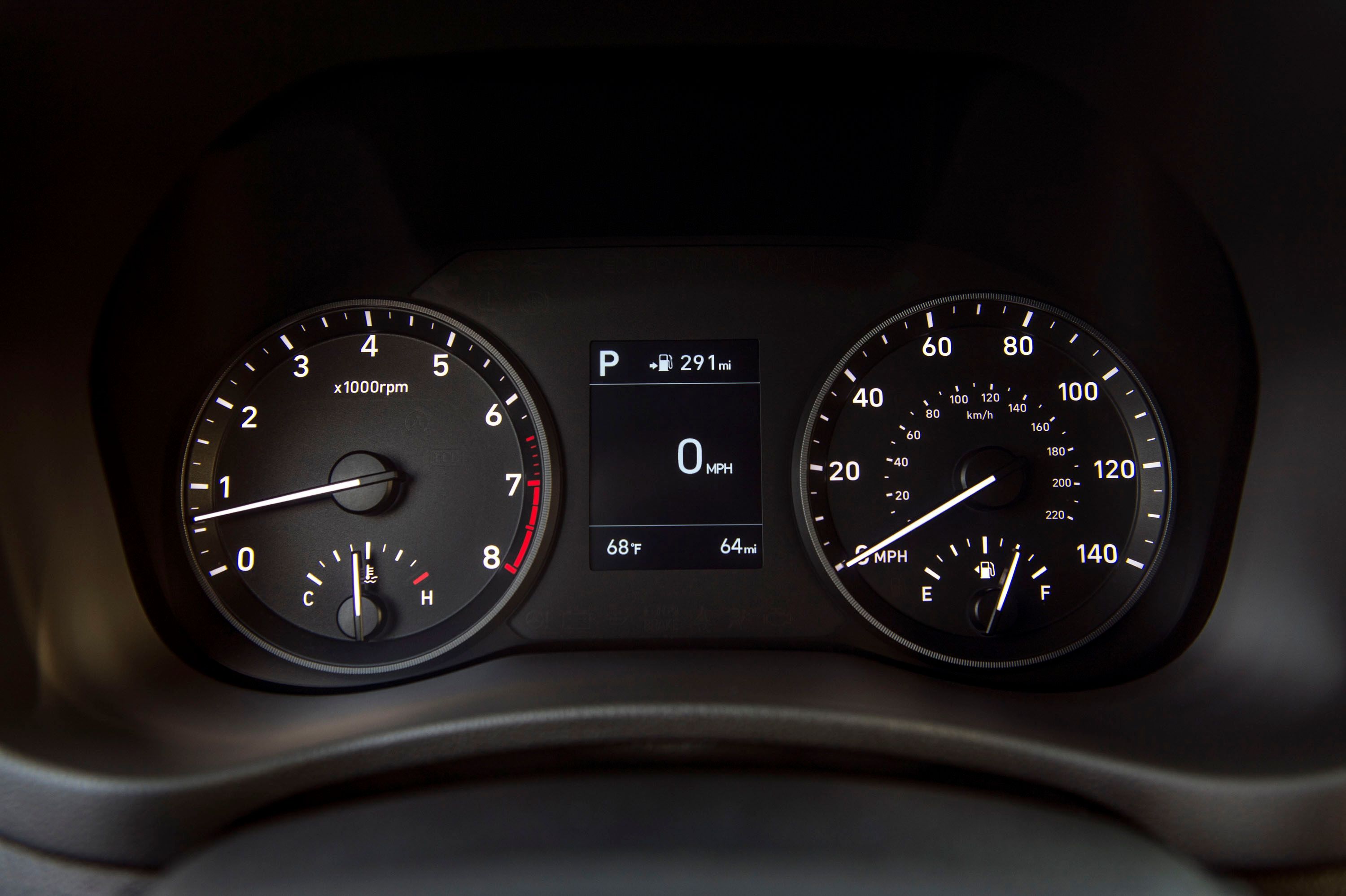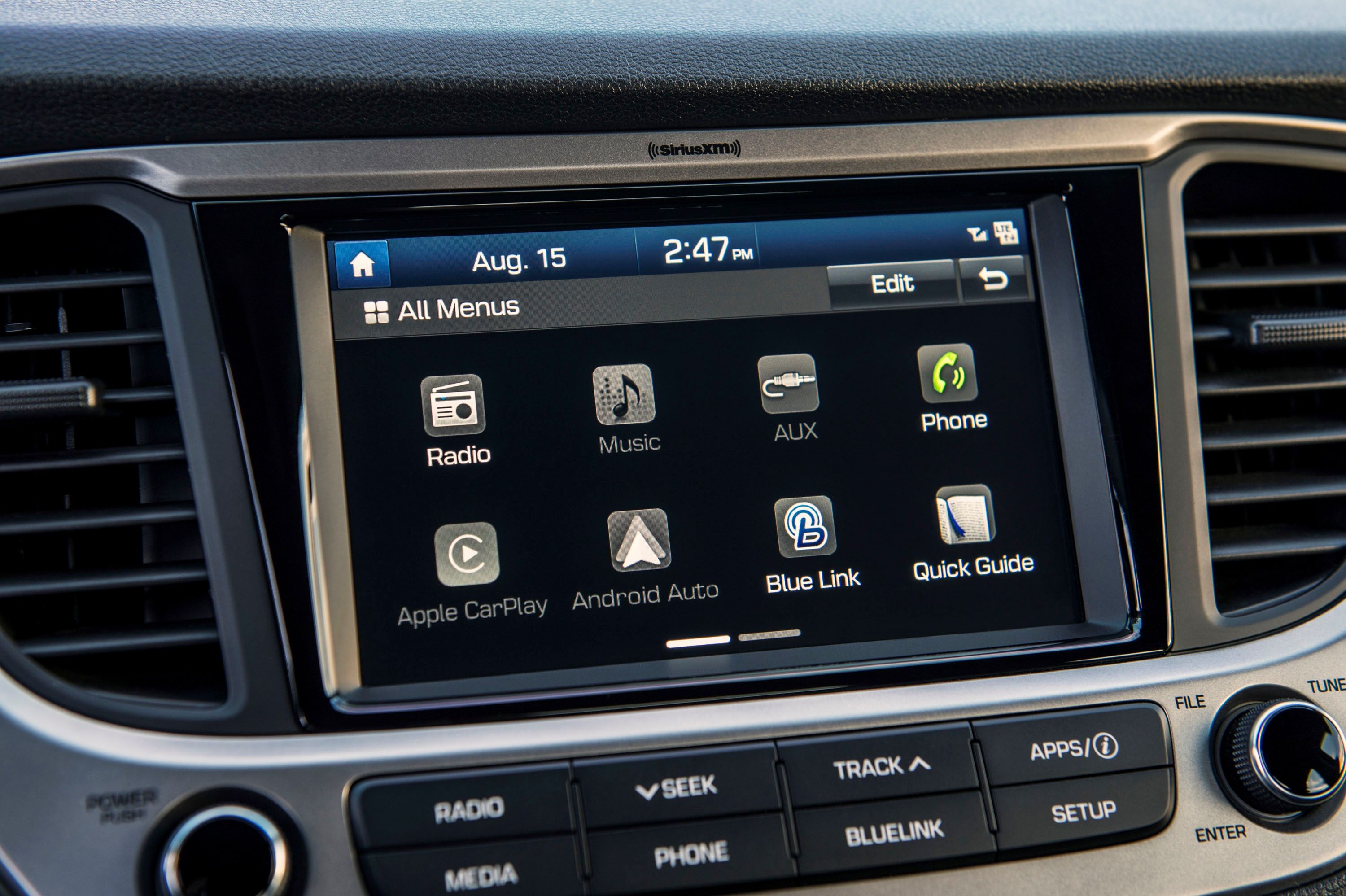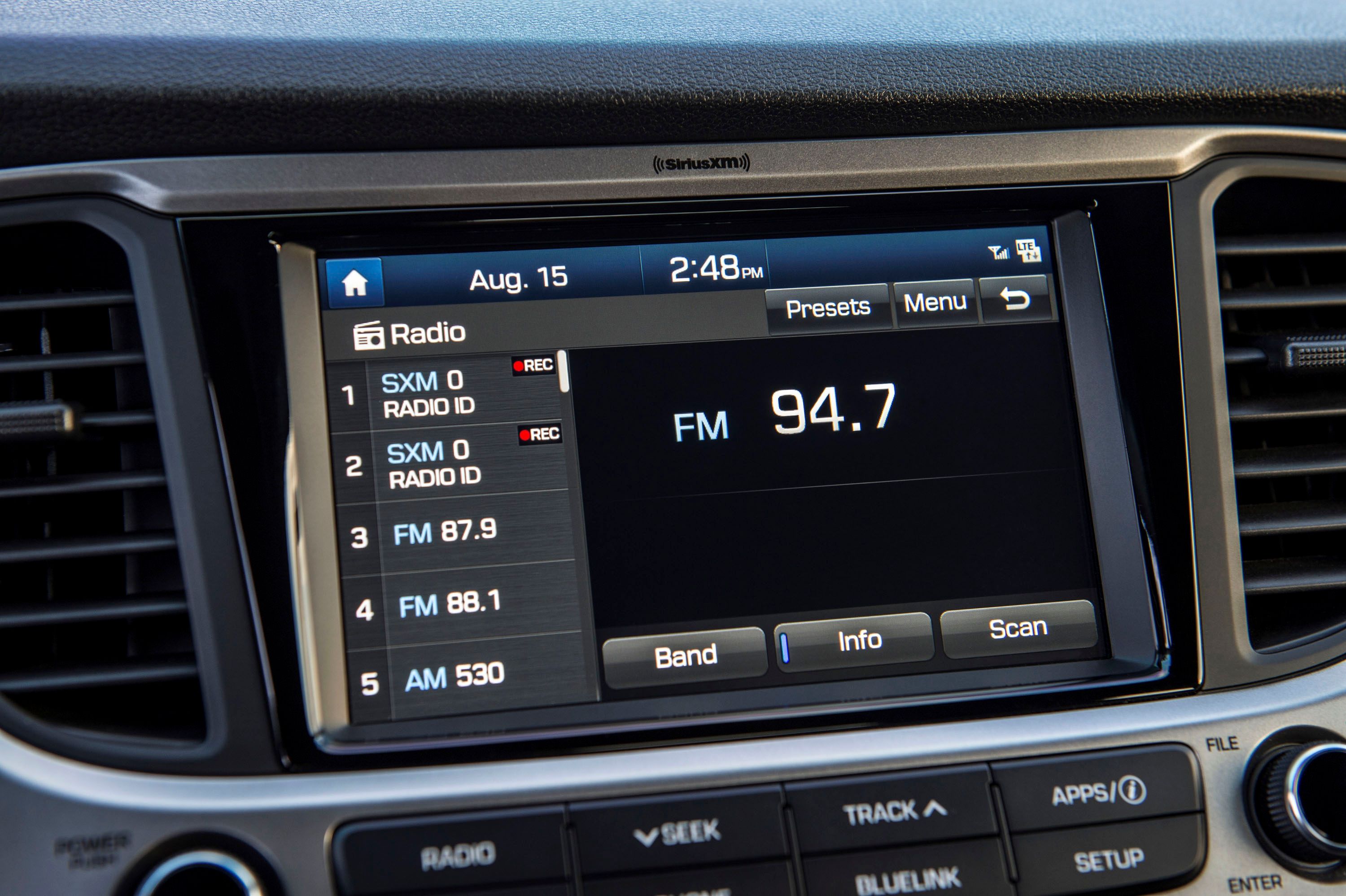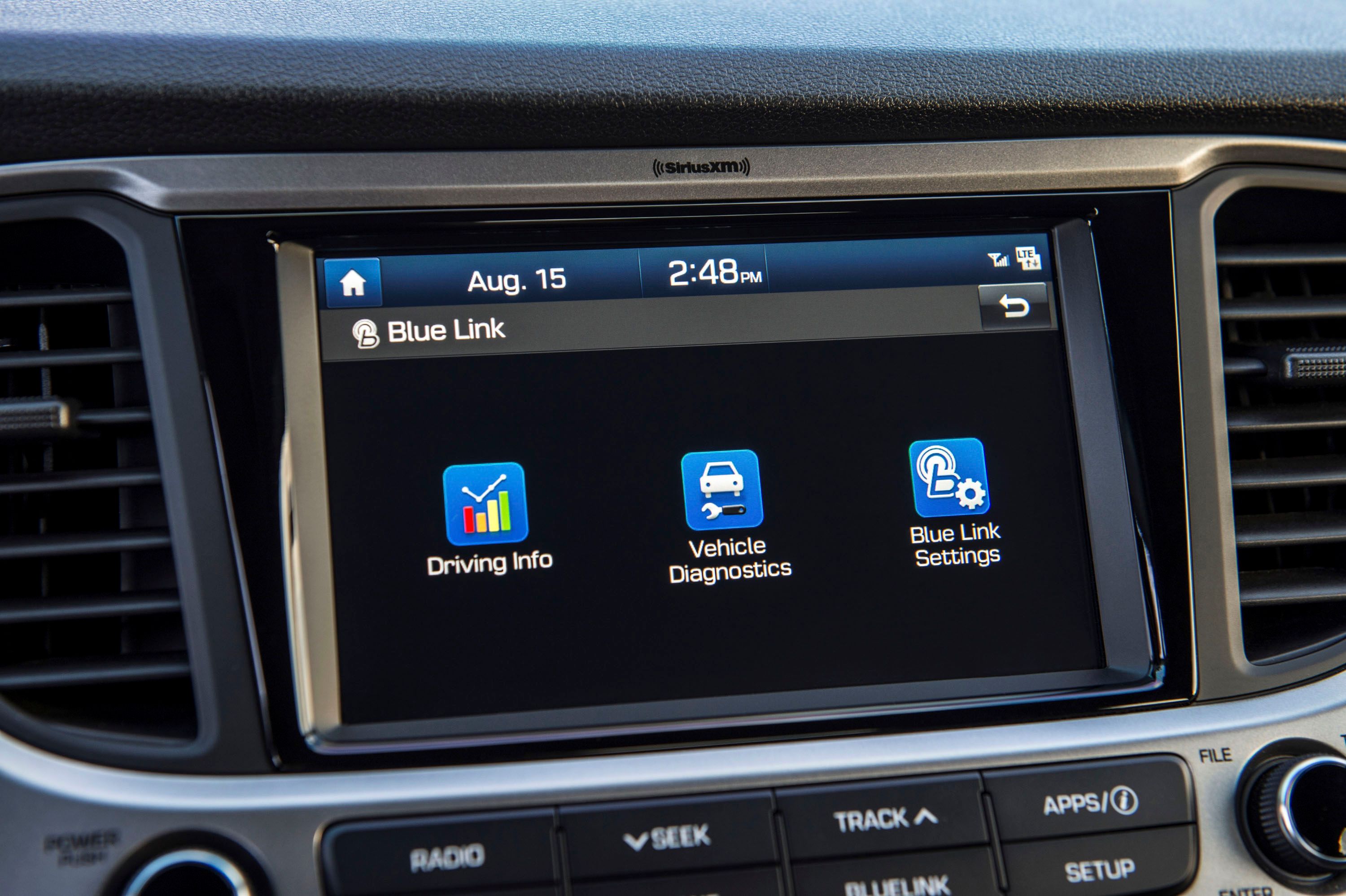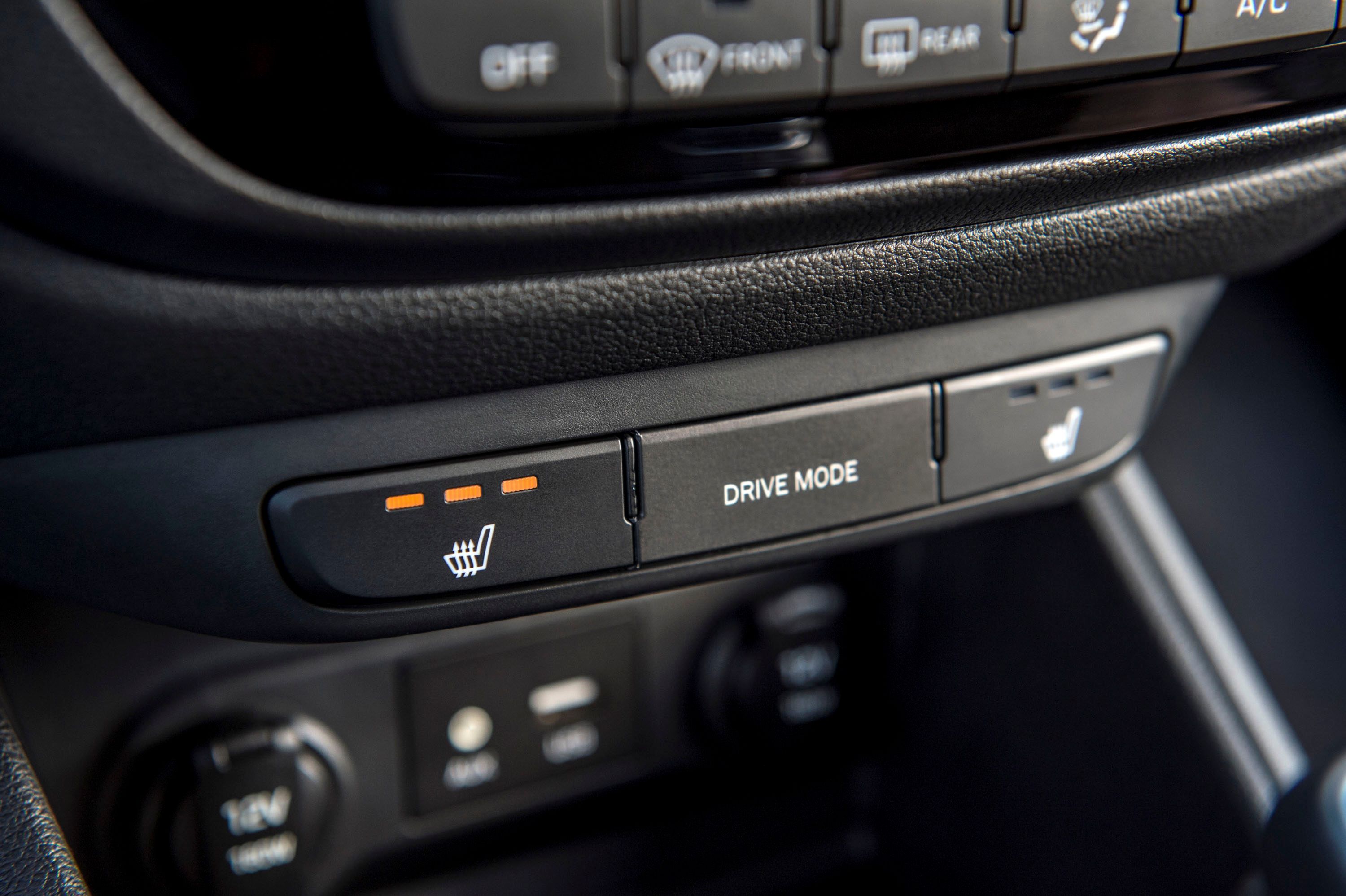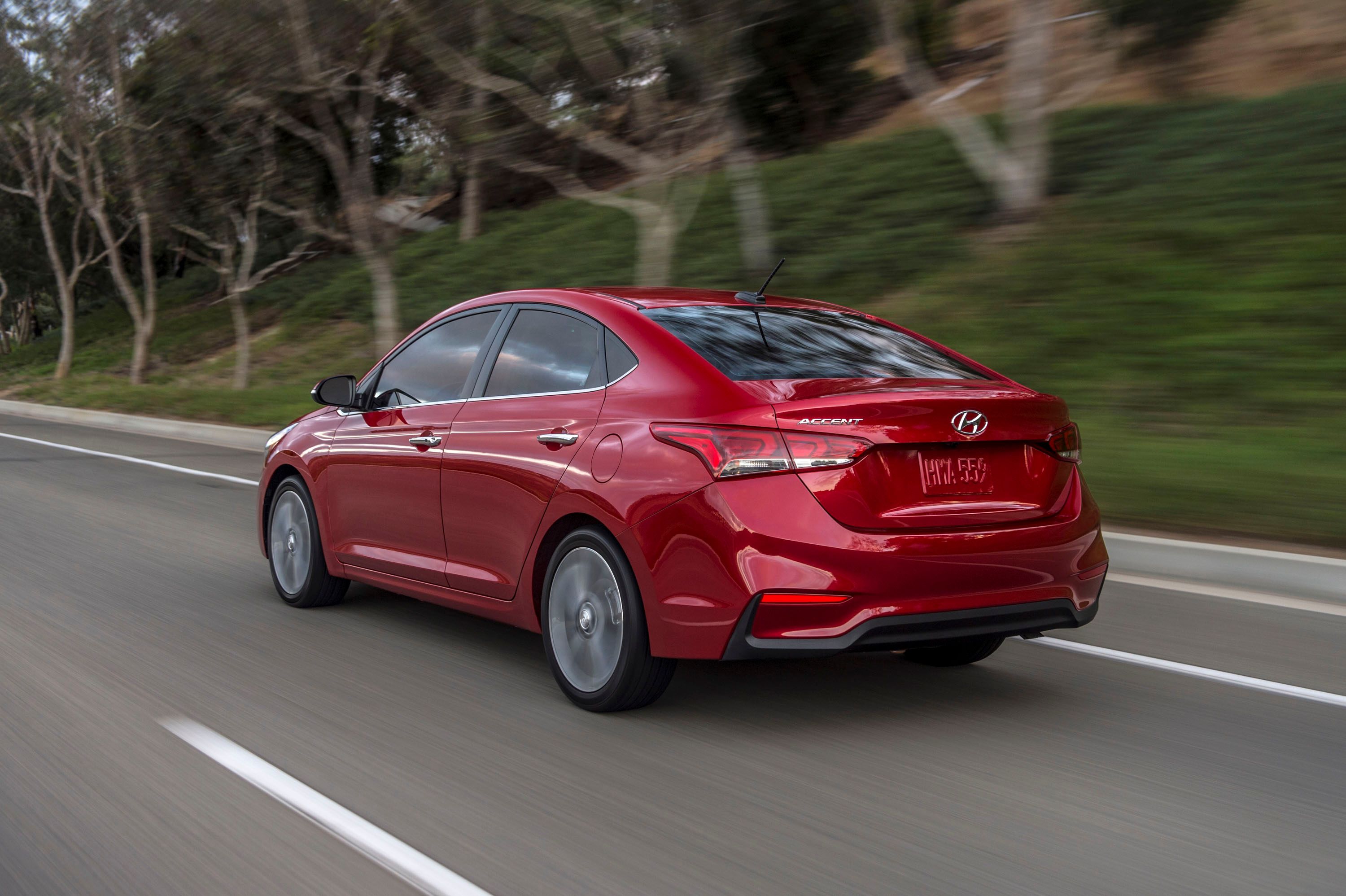First introduced in 1994 as a replacement for the Hyundai Excel, the Accent has seen a total of four previous generations, selling under a variety of names across several markets worldwide. Also known as the Verna in India and China, the Solaris in Russia, and the Grand Avega in Indonesia, among other names, the Accent has always been a staple of the subcompact segment, offering both a sedan and hatchback body style. Measured against its peers, the Accent is known for offering solid features and a smooth, comfortable ride, as well as slick styling on later model years. Now, the Accent just broke cover at the Orange County International Auto Show, entering its fifth generation. With the changeover, Hyundai says it focused on sharpening the design and aesthetic, upgrading the technology for entertainment and safety purposes, increasing the efficiency of the powertrain, lowering NVH levels, and a increasing driver engagement.
Essentially, Hyundai hopes to improve the Accent in just about every way possible with this latest refresh. And with a plethora of competing models waiting to go head-to-head with Hyundai, it makes sense that the South Korean brand wants to bring it’s A-game. Read on for the details on what that entails.
Continue reading to learn more about the 2018 Hyundai Accent.
2018 Hyundai Accent
- Make: Array
- Model: 2018 Hyundai Accent
- Engine/Motor: inline-4
- Horsepower: 130
- Torque: 119
- Transmission: six-speed manual
- [do not use] Vehicle Model: Array
Exterior
For starters, any generation changeover must naturally bring with it a new styling update, and the new Hyundai Accent is no exception. As such, the South Korean brand gave the subcompact a new aesthetic, and long story short, we think it looks great. At first glance, the new Accent looks a whole lot classier than many of its subcompact competitors, namely thanks to sharp edges, crisp lines, and proportions that give it the appearance that it’s actually larger than it really is.
While most subcompacts get bulbous, rounded styling elements (the Honda Fit and Toyota Yaris both readily come to mind), the Hyundai is a breath of fresh air. It definitely takes a more premium approach to exterior styling, and that’s a very nice thing to see in this segment.
Taking a walk around the car, we find a new fascia that adds a larger Cascading grille design. This plus-sized intake is fitted with a multitude of horizontal slates that add to the car’s visual width, while also recalling similar front-end designs utilized by the luxury German brand Audi. The grille is part of an X-shaped design scheme, which also incorporates wraparound headlight housings offered with available LED daytime running lights. Chrome surrounds are used throughout, while fog lights are mounted in the corners of the bumper.
Moving to the flanks, we find the Accent equipped with large 17-inch wheels. These look great in the wheel wells, and come wrapped in low-profile tires that once again make the Accent appear even more high-end. More chrome trim was added to the window line, plus the door handles as well. A lower character line is formed by an indentation just above the side skirts, while LEDs are used for the turn signals mounted into side-view mirrors.
Further towards the rear, the tail gets equipped with a wraparound design for the taillight housings. These V-shaped housings lead the eye into the trunk with checkmark graphics, while the trunk gets a rounded lip that extends the line for a spoiler-like effect. The lower trim gets a matte black finish, while options once again include LED lighting elements for the taillights.
Note: The new fifth-generation Hyundai Accent (pictured right) offers a big aesthetic improvement over the outgoing fourth-generation model (pictured left).
Not only does it look good, but Hyundai also managed to improve the aerodynamics of the vehicle. The more slippery shape is a result of a new front lip spoiler and a lowered ride height, both of which contribute to a drag coefficient of 0.28. To put that in perspective, the aero-obsessed, fuel-sipping Toyota Prius gets a comparable Cd of 0.25.
Finally, the new Hyundai Accent is larger than before, adding roughly 1.2 inches to the overall width, plus an extra 0.6 inches to the length and an extra 0.4 inches to the wheelbase. The car is set at the same height as before.
Exterior Dimensions
|
2017 Accent |
Change |
2018 Accent |
|
|
Overall Length (in.) |
172.0 |
+0.6 |
172.6 |
|
Overall Width (in.) |
66.9 |
+1.2 |
68.1 |
|
Overall Height (in.) |
57.1 |
- |
57.1 |
|
Wheelbase (in.) |
101.2 |
+0.4 |
101.6 |
Competing Exterior Design
Note: Toyota Yaris pictured on the left, Ford Fiesta pictured on the right.
The Toyota Yaris is another popular subcompact, and for good reason. Offered as a five-door hatchback, the Yaris is definitely a very practical option in this segment. Outside, higher trim levels come equipped with 16-inch alloy wheels, while the large front grille sit between sharp headlights. The profile reveals just how bulbous the car is, and while we think the Accent is the better-looking option, some could consider the rounded Yaris to be kind of cute.
The next competitor we’ve got lined up is the Ford Fiesta, which arrives in the 2017 model year boasting some equally sharp new bodylines. Compared to the rather elegant-looking Accent, the Fiesta is definitely much more sporty looking. The front end gets a hexagonal intake and pointed, drawn-back headlight housings. Higher-end models get a solid dose of WRC-inspired pieces as well.
So basically, it breaks down like this – the Yaris is cute, the Fiesta is sporty, and the Accent is elegant. Sounds simple enough.
Interior
As is often the case with the subcompact segment, interior space can be at a premium, but the new Accent addresses that concern with extra passenger volume going into the 2018 model year. A lot of it comes down to the increase in exterior dimensions, with the extra length, width, and wheelbase all contributing to more space inside. Total passenger volume was increased to 103.9 cubic feet, which, Hyundai points out, makes the Accent more of a compact rather than a sub-compact vehicle, and beating out competitors like the Toyota Yaris and Ford Fiesta in the process.
In terms of looks and layout, the Accent gets a driver-oriented layout for the interior, plus a wide instrument panel and horizontal design scheme for the controls. There’s also a 60/40 split for the rear bench that ups the convenience and practicality of the vehicle.
To complement the premium exterior appearance, the interior of the Accent gets a few very nice features. These include additional soft-touch materials added here and there, plus a standard backup camera. There’s also an available heating function for the front seats. Further chassis improvements help to iron out noise, vibration, and harshness (NVH), while a push-button starter and a proximity key system add extra convenience as well.
As is customary in any next-gen vehicle these days, upgraded infotainment was also a major concern for the Accent. Standard spec throws in a 5.0-inch display in the center dash, although a 7.0-inch unit is also offered. Both use a TFT LCD configuration for the screen. Go for the larger 7.0-inch screen, and you get support for Apple CarPlay and Android Auto, which means all the usual good stuff you’d expect (app support, navigation, calling, etc.). There are also dual USB chargers, plus niceties like an auxiliary input jack and optional SiriusXM radio.
Further tech features include the Hyundai Blue Link Remote Start system, which will essentially integrate with Amazon Alexa and Google Home for voice command from within the home. Basically, the system allows you to tell your digital assistant to start the car and set the climate control at a certain temperature. Remote start is useful in that it’ll pre-condition the cabin through the car’s climate control system, a feature that’s particularly well-suited to those living in a hot or cold climate. If it’s cold weather that you must deal with, the system also tosses in a rear defroster and heated side mirror function with the remote heating feature.
Moving on to safety improvements, the 2018 Hyundai Accent gets new front side members and inner side sills, both of which help add extra layers of collision protection. There’s also larger front crumple zones, a new set of front side airbags, and greater small overlap crash performance. The Accent comes standard with six airbags, ESC, Vehicle Stability Management, Traction Control, and ABS.
Finally, the Accent is also offered with new safety technology, such as Forward Collision-avoidance Assist that utilizes a new front radar system. If an obstacle is detected and the driver does not respond, the system will engage an emergency braking feature to either stop short or lessen an impact.
|
Interior Volume (cu. ft.) |
2018 Accent |
2017 Fiesta |
2017 Yaris iA |
|
Passenger |
90.2 |
85.1 |
85.9 |
|
Cargo |
13.7 |
12.8 |
13.5 |
|
Total |
103.9 |
97.9 |
99.4 |
Competing Cabins
Note: Toyota Yaris pictured on the left, Ford Fiesta pictured on the right.
Inside the Toyota Yaris, there are lots of grey, soft touch plastics, while the dash rises above the central tunnel without much in terms of a central console. A screen is placed front and center above rotary knobs for the climate control, while a grippy steering wheel with large side bolsters is in front of the hot seat. We like the feel of it, but think there is still something to be desired in terms of ergonomics. For example, there are not enough cup holders, and the cup holders that are there are a bit too small. Furthermore, the touchscreen is a tad slow in reacting to inputs. On the practicality side of things, the hatchback does offer tons of space.
Up next is the Ford Fiesta, which recently got a significant overhaul inside the cabin with the latest model year changeover. And that’s a good thing, as previous models were definitely less than desirable when it came to interior appointment. Space was also increased, although larger individuals will still struggle to find comfort when sitting on the rear bench. A 6.5-inch screen is standard and an 8.0-inch screen is optional, both of which mount to the top of the dash in a floating, tablet style. Apple CarPlay, Android Auto, and the onboard Bluetooth connection provide smartphone support.
In terms of look and layout, we’d probably go for the Ford Fiesta, especially when talking about the higher trim levels. The other two are nice, but Ford really seems like it did its homework with the latest refresh.
Note: Toyota Yaris pictured on the left, Ford Fiesta pictured on the right.0}
Making the Accent move into 2018 is a few nice upgrades to the engine and drivetrain. Understandably, the big focus was on increasing overall efficiency, which means the improvements include low-friction piston rings, a variable fuel pressure module, and new engine software tuning. The upgraded chassis also helps with mileage thanks to a lower curb weight. The result is fuel efficiency sees a 7-percent bump.
The engine spec is a 1.6-liter Gamma four-cylinder engine with GDI (Gasoline Direct Injection), which makes as much as 130 horsepower and 119 pound-feet of torque. The new lump gets a broader power band when compared to the outgoing model, with more low end torque overall. And that’s great for around-town scooting, especially when it’s combined with greater overall fuel efficiency.
The 1.6-liter can be matched with either a six-speed manual transmission or a seven-speed automatic. The auto box gets a 4-pound weight reduction compared to the previous unit, which isn’t much, but helps when combined with other weight savings made elsewhere. The automatic transmission also provides a couple of drive modes, including Normal and Sport. Switching between these adjusts the settings for the powertrain and steering, and can be adjusted via a button in the center console.
Competing Drivetrains
Providing motivation in the Toyota Yaris is a 1.5-liter four-cylinder engine. With natural aspiration, output is rated at a relatively humble 106 horsepower and 103 pound-feet of torque. Routing it to the front axle is either a five-speed manual or a four-speed automatic transmission. And while those peak numbers aren’t all that impressive, the car’s low curb weight means its still pretty interesting to drive, especially with max power hitting at a lofty 6,000 rpm. The Yaris is efficient too, posting mileage figures of 30 mpg in the city, 36 mpg on the highway, and 32 mpg combined.
By contrast, the Ford Fiesta offers a bit more excitement under the hood thanks to a turbocharged three-cylinder engine making as much as 123 horsepower. The base model makes a decent 120 horsepower from four cylinders. Making the cog swaps is a five-speed manual transmission as standard, although a six-speed dual-clutch automatic is also on the table. And for those living overseas, a variety of diesel powerplants are also on the table.
Against competition like this, the Accent is looking the more muscle bound option, while the Yaris is the way to go if efficiency is a major concern.
Chassis And Handling
For the 2018 model year, Hyundai updated the Accent’s chassis, incorporating a good deal more of the brand’s Advanced High Strength Steel in the construction. Specs include up to 54.5 percent of the chassis using the stuff, which is an increase of 13 percent compared to the previous generation.
This result is an improvement to the car’s torsional rigidity, with a 32-percent increase in twist resist overall. This has the net result of making the Accent more interesting to drive, not to mention more comfortable as well. Further improvements were made to driving dynamics and comfort via suspension refinement, with a higher rear roll center and a higher leverage ratio for the rear shocks, plus steering enhancements as well. Hyundai says the standard Motor-Driven Power Steering will adjust to the given driving conditions, with sportier settings offered.
Competing Chassis And Handling
Note: Toyota Yaris pictured on the left, Ford Fiesta pictured on the right.
Like we mentioned before, we think the Toyota Yaris is a very entertaining car to drive. While it’s not exactly a head-snapping muscle machine, it does have the low weight and plucky suspension tuning we love so much in a hatchback. The steering and front end are communicative, and while it’ll wash out if pushed too hard, the Yaris is still a relatively decent choice if taking a winding back road.
The same can be said for the Ford Fiesta. The car will grip when asked, and the nose turns in if you aren’t totally ham fisted about it. And at a little over 2,500 pounds, there isn’t too much heft to shift around.
Note: Toyota Yaris pictured on the left, Ford Fiesta pictured on the right.0}
The 2018 Hyundai Accent is set to arrive in U.S. dealers in the fall of 2017. Hyundai didn’t give us any official pricing numbers, but it’s expected to slot in at pretty much the same spot as the current model. The current MSRP starts at $14,745.
Prices
Kia Rio
Kia has been making pretty impressive strides as of late, and the Rio reflects that with updates across the board. The exterior looks great, with a tiger nose grille and LED lighting signatures, plus larger exterior dimensions. The interior is also a big improvement, and looks great with its floating touchscreen in the dash. The top-rated engine is a 1.4-liter four-cylinder which makes as much as 98 horsepower and 98 pound-feet of torque. Routed through a six-speed manual transmission, and the 0-to-60 mph sprint is done in 11.8 seconds.
Read our full review on the 2017 Kia Rio.
Honda Fit
The Honda Fit is another standard in this segment, and looks the part with a broad, rounded nose bookended by a pair of horizontal headlights. The interior is functional and big, and comes with an available 7.0-nch touchscreen. Leather upholstery is also on the table. Under the hood you’ll find a 1.5-liter four-cylinder engine, which produces as much as 130 horsepower and 114 pound-feet of torque. A six-speed manual and a CVT route the power to front axle.
Read our full review on the 2017 Honda Fit..
Conclusion
The strength of the 2018 Hyundai Accent lies in its ability to do most things well. It doesn’t really stand out in any one particular area, but rather, provides a good deal of interior space, lots of nice features both standard and optional, enough power to get by, and a good looking exterior style. It’s also well priced.
The only real criticism is that it’s a bit slow. Of course, that’s to be expected, even for a car that boasts previous competition duty in the World Rally Championship. Regardless, if you’re looking for a solid little commuter, you could do worse than the Accent.
References
Hyundai Accent
Read our full review on the previous generation Hyundai Accent.
Read more Hyundai news.

